Evolution of Tunneling Hydro-Technology: From Ancient Times to Present and Future
Abstract
:1. Prolegomena
By studying the past we learn about the present and are planning anything for the future.Andreas N. Angelakis
2. Tunneling: From the Prehistoric to Early Medieval Era (ca 7600 BC–1453 AD)
2.1. Persian and Other Prehistoric Civilizations (ca 7600–110 BC)
2.2. Early Ancient Egyptians and Other Civilizations (ca 4000–30 BC)
2.3. Ancient India (ca 3300–185 BC)
2.4. Minoan and Mycenaean Civilizations (ca 3200–1050 BC)
2.5. Babylonian, Assyrian, and Other Asian Civilizations
2.6. Iron Age (ca 1050–750 BC)
2.7. Archaic, Classical, and Hellenistic Periods (ca 750 BC–31 BC)
- (a)
- In the vertical plane, at the start of work, Eupalinos leveled around the mountain, probably following a contour line to ensure that both tunnels were started at the same altitude. He increased the possibility of the two tunnels meeting each other, by increasing the height of both tunnels at the point near the join. In the north tunnel, he kept the floor horizontal and increased the height of the roof by 2.5 m, while in the south tunnel he kept the roof horizontal and lowered the level of the floor by 0.6 m (Figure 8a). His precautions as to vertical deviation proved unnecessary, since measurements show that there was very little error. At the meeting point, the closing error in altitude for the two tunnels was a few millimeters [43].
- (b)
- In the horizontal plane, Eupalinos calculated the expected position of the meeting point in the mountain. Since two parallel lines never meet, an error of more than 2 m horizontally meant that the north and south tunnels would never meet. Therefore, Eupalinos changed the direction of both tunnels, as shown in the picture (the north tunnel to the left and the south tunnel to the right) (Figure 9b). This gave a catching width that was wider by 17 m so that a crossing point would be guaranteed, even if the tunnels were previously parallel and far away. They thus meet at nearly a right angle [43].
2.8. Roman Period (31 BC–476 AD)
2.8.1. Drainage Tunnels
2.8.2. Spring Tunnels
2.8.3. Aqueduct Tunnels
2.8.4. Harbor-Related Tunnels
2.8.5. Tunnels Associated with Mining
2.9. Byzantine Period (ca 330–1453 AD)
3. Water Tunnelling in Early and Mid-Modern Times (ca 1453–1850 AD)
4. Tunneling in Contemporary Times (1853 AD–Present)
- (a)
- The Delaware aqueduct in the New York City water supply system. It was constructed between 1939 and 1945 and carries approximately half of New York City’s water supply of 4,900,000 m3/d. At 4.10 m wide and 137 km long, the Delaware Aqueduct is the world’s longest tunnel. It takes water from the Rondout, Cannonsville, Neversink, and Pepacton reservoirs on the west bank of the Hudson River through the Chelsea Pump Station, then into the West Branch, Kensico, and Hillview reservoirs on the east bank, ending at Hillview in Yonkers, New York [124].
- (b)
- The Metropolitan Area Outer Underground Discharge Channel is an underground water infrastructure project in Kasukabe, Saitama, Japan. It is the world’s largest underground flood water diversion facility, built to mitigate the overflowing of the city’s major waterways and rivers during rain and typhoon seasons [125]. It is located between Showa and Kasukabe in Saitama prefecture, on the outskirts of the city of Tokyo in the Greater Tokyo Area. Construction started in 1992 and was completed by early 2006.
- (c)
- In China, a secretive 500 km long irrigation project being built to divert snowmelt from the Altay Mountains to desert areas in its restive Xinjiang region has developed a too-much-of-a-good-thing problem. Workers keep tapping into gushing flows of groundwater, which has slowed construction to a crawl. It was based in part on the 2000-year-old karez system designed by Uyghurs in Turpan, and China began constructing the 514 km long project years ago, in what is reportedly the longest underground irrigation canal system in the world [126]. The project comprises three deeply dug tunnels, the longest of which is the 280 km long Kashuang Tunnel—twice as long as the Delaware Aqueduct, the main channel supplying water to New York City.
5. Emerging Trends of Tunneling Aqueducts
6. Epilogue
Author Contributions
Funding
Data Availability Statement
Conflicts of Interest
References
- Voudouris, K.S.; Christodoulakos, Y.; Steiakakis, E.; Angelakis, A.N. Hydrogeological characteristics of Hellenic aqueducts-like Qanats. Water 2013, 5, 1326–1345. [Google Scholar] [CrossRef]
- Barghouth, J.M.; Al-Saed, R.M. Sustainability of ancient water supply facilities in Jerusalem. Sustainability 2009, 1, 1106–1119. [Google Scholar] [CrossRef]
- De Feo, G.; Angelakis, A.N.; Antoniou, G.P.; El-Gohary, F.; Haut, B.; Passchier, C.W.; Zheng, X.Y. Historical and technical notes on aqueducts from prehistoric to medieval times. Water 2013, 5, 1996–2025. [Google Scholar] [CrossRef]
- Dutt, S.; Gupta, A.K.; Singh, M.; Jaglan, S.; Saravanan, P.; Balachandiran, P.; Singh, A. Climate variability and evolution of the Indus civilization. Quat. Int. 2019, 507, 15–23. [Google Scholar] [CrossRef]
- Mumbai Metro Rail Corporation Limited. (n.d.). Metro Line 3—Colaba-Bandra-SEEPZ, Mumbai, India. Available online: https://www.railwaygazette.com/infrastructure/mumbai-metro-line-3-breaks-ground/43391.article (accessed on 7 September 2023).
- Tris, T. TBM Launches on Vishnugad-Pipalkoti Hydropower Project. Available online: https://tunnellingjournal.com/tbm-launches-vishnugad-pipalkoti-hydropower-project/ (accessed on 7 September 2023).
- Express Web Desk. 10 interesting facts about India’s longest Chenani-Nashri tunnel 2 April 2017. In The Indian Express Jornalism of Encourage (2017); The Indian Express: New Delhi, India, 2017; Available online: https://indianexpress.com/article/india/chenani-nashri-tunnel-inauguration-10-facts-about-indias-longest-tunnel-narendra-modi-jammu-srinagar-4596209/ (accessed on 7 September 2023).
- Tsatsanifos, C.; Michalis, I. Tunnelling in Greece: Past, Present, Future. In Proceedings of the 2nd Eastern European Tunnelling Conference, Athens, Greece, 28 September–1 October 2014. [Google Scholar]
- Chiotis, E.; Marinos, P. Geological aspects on the sustainability of ancient aqueducts of Athens. Bull. Geol. Soc. Greece 2012, 46, 16–38. [Google Scholar] [CrossRef]
- Kulkarni, H.; Rao, G. Karez: An Ancient Underground Water Supply System. In Geospatial Technologies in Urban System Development: Emerging Research and Opportunities; Mukherjee, S., Ed.; IGI Global: Hershey, PA, USA, 2017; pp. 143–157. [Google Scholar]
- Sudhakar, G.J.; Amirthalingam, M.; Sumabala, P. Tank irrigation in South India: A case study of Kolavoy tank. J. Indian Hist. Cult. 2007. Available online: https://www.researchgate.net/publication/312838455_TANK_IRRIGATION_IN_SOUTH_INDIA_A_CASE_STUDY_OF_KOLAVOY_TANK (accessed on 17 September 2023).
- World Bank. India—Enhancing Water Resources and Water Efficiency Management Project; World Bank: Washington, DC, USA, 2018. [Google Scholar]
- Castellani, V.; Dragoni, W. Ancient tunnels: From roman outlets back to the early Greek civilization. In Proceedings of the 12th International Congress of Speleology, La-Chaux-de-Fonds, Switzerland, 10–17 August 1997; pp. 265–268. [Google Scholar]
- Grewe, K. Licht am Ende des Tunnels, Planung und Trassierung in Antiker Tunnelbau; Ant. Welt, Sonderh: Mainz, Germany, 1998. [Google Scholar]
- Grewe, K.; Tutlies, P. Der Drover-Berg-Tunnel-Wanderweg bei Düren. Fundgeschichten—Archäologie Nordrh. Westfal. Mainz 2010, 4, 403–405. [Google Scholar]
- Alemohammad, S.H.; Gharari, S. Qanat: An ancient invention for water management in Iran. In Proceedings of the Water History Conference, Delft, The Netherlands, 17–21 July 2010; Available online: https://www.researchgate.net/publication/321914743_Qanat_An_Ancient_Invention_for_Water_Management_in_Iran (accessed on 18 September 2023).
- Boustani, F. Sustainable Water Utilization in Arid Region of Iran by Qanats. 2008. Available online: chrome-extension://efaidnbmnnnibpcajpcglclefindmkaj/https://www.researchgate.net/profile/Fardin-Boustani-2/publication/242784793_Sustainable_Water_Utilization_in_Arid_Region_of_Iran_by_Qanats/links/5467085a0cf2397f7829f966/Sustainable-Water-Utilization-in-Arid-Region-of-Iran-by-Qanats.pdf (accessed on 21 February 2023).
- Laureano, P. Water catchment tunnels: Qanat, foggara, falaj. An ecosystem vision. In Proceedings of the EN IWA Specialized Conference on Water & Wastewater Technologies in Ancient Civilizations, Istanbul, Turkey, 22–24 March 2012; pp. 22–24. [Google Scholar]
- Angelakis, A.N.; Kavoulaki, E.; Dialynas, M.G. Sanitation and stormwater and wastewater technologies in Minoan era. In Evolution of Sanitation and Wastewater Management through the Centuries; Angelakis, A., Rose, J., Eds.; IWA Publishing: London, UK, 2014; Chapter 1; pp. 1–24. [Google Scholar]
- TEW. Tour Egypt Website: “Hourse Temple”. 2023. Available online: http://www.touregypt.net/edfut.htm#ixzz3pVpWqfyx (accessed on 7 September 2023).
- Driaux, D. Water supply of ancient Egyptian settlements: The role of the state. Overview of a relatively equitable scheme from the Old to New Kingdom (ca. 2543–1077 BC). Water Hist. 2016, 8, 43–58. [Google Scholar] [CrossRef]
- Evans, S. The Palace of Minos at Knossos: A Comparative Account of the Successive Stages of the Early Cretan Civilization as Illustrated by the Discoveries; Reprinted by Biblo and Tannen: New York, NY, USA, 1964; Macmillan and Co.: London, UK, 1921; Volume I–IV. [Google Scholar]
- El-Gohary, F.; Angelakis, A.N.; Rose, J. Evolution of sanitation and wastewater technologies in Egypt. In Evolution of Sanitation and Wastewater Technologies Through Centuries; IWA Publishing: London, UK, 2014; Chapter 4; pp. 55–68. [Google Scholar]
- Jansen, R.B. Dams from the Beginning. Dams Public Saf. 1980, 1, 1e57. [Google Scholar]
- Mishra, U. Shrines as ‘monuments’: Issues of classification, custody and conflict in Orissa. In Negotiating Cultural Identity; Routledge: Delhi, India, 2019; pp. 200–229. [Google Scholar]
- Singh, P.K.; Dey, P.; Jain, S.K.; Mujumdar, P.P. Hydrology and water resources management in ancient India. Hydrol. Earth Syst. Sci. 2020, 24, 4691–4707. [Google Scholar] [CrossRef]
- Kenoyer, J.M. Ancient Cities of the Indus Valley Civilization; Oxford University Press: Oxford, UK, 1998. [Google Scholar]
- Iyer, M. The Best Laid Plans, Deccan Herald. 2019. Available online: https://www.deccanherald.com/sunday-herald/best-laid-plans-713650 (accessed on 7 September 2023).
- Thapar, R. Aśoka and the Decline of the Mauryas; Oxford University Press: Oxford, UK, 2012; p. 90. ISBN 9780199088683. [Google Scholar]
- Voudouris, K.; Tsatsanifos, C.; Yannopoulos, S.; Marinos, V.; Angelakis, A. Evolution of underground aqueducts in the Hellenic world. Water Sci. Technol. Water Supply 2016, 16, 1159–1177. [Google Scholar] [CrossRef]
- Mamassis, N.; Moustakas, S.; Zarkadoulas, N. The operation of ancient reclamation works at Lake Copais in Greece. Water Hist. 2015, 7, 271–287. [Google Scholar] [CrossRef]
- Knauss, J. NE Kopais: Technical–Historical Aspects of the Unfinished Ancient Drainage Tunnel. Proc. Soc. Boeotian Stud. 1995, 2, 83–95. [Google Scholar]
- Knauss, J. The prehistoric water management and land reclamation system in the Kopais-Basin, Boiotia, middle Greece. ICID J. 2000, 49, 39–48. [Google Scholar]
- Frazer, J.G. Pausanias’s Description of Greece; Macmillan and Co. Limited: New York, NY, USA, 1898. [Google Scholar]
- Ghembaza, T.; Windell, D. Mysteries of Lake Copais: The Drainage–Massive Bronze Age and Hellenistic Hydraulic Engineering Works. Open J. Stud. Hist. 2021, 4, 67–84. [Google Scholar] [CrossRef]
- Ahmed, A.T. Water quality for irrigation and drinking water use of Aflaj in Oman. Water Sci. Technol. Water Supply 2015, 15, 421–428. [Google Scholar] [CrossRef]
- Al-Marshudi, A.S. Traditional Irrigated Agriculture in Oman. Water Int. 2001, 26, 259–264. [Google Scholar] [CrossRef]
- Al-Marshudi, A.S. The falaj irrigation system and water allocation markets in Northern Oman. Agric. Water Manag. 2007, 91, 71–77. [Google Scholar] [CrossRef]
- Pal, S.; Mukherjee, A.; Senapati, T.; Samanta, P.; Mondal, S.; Ghosh, A. Surface water quality assessment of abandoned opencast coal pit-lakes in Raniganj coalfields area, India. Ecoscan 2013, 4, 175–188. [Google Scholar]
- Frumkin, A.; Shimron, A. Tunnel engineering in the Iron Age: Geoarchaeology of the Siloam Tunnel, Jerusalem. J. Archaeol. Sci. 2006, 33, 227–237. [Google Scholar] [CrossRef]
- Reich, R.; Shukron, E. The date of the Siloam Tunnel reconsidered. Tel Aviv 2011, 38, 147–157. [Google Scholar] [CrossRef]
- UNESCO. Pythagoreion and Heraion of Samos. In UNESCO World Heritage Convention; Retrieved 25 November 2022; United Nations Educational Scientific and Cultural Organization: Paris, France, 2022. [Google Scholar]
- Kienast, H.J. The Aqueduct of Eupalinos on Samos; Archaeological Receipts Fund, Directorate of Publications: Athens, Greece, 2005. [Google Scholar]
- Camp, J.M., II. Drought and Famine in the 4th Century BC; The American School of Classical Studies at Athens: Athens, Greece, 1982; Available online: http://www.jstor.org/stable/1353941 (accessed on 7 September 2023).
- Crouch, D.P. Water Management in Ancient Greek Cities; Oxford University Press: Cary, NC, USA, 1993. [Google Scholar]
- Tölle-Kastenbein, R. Antike Wasserkultur; Renate Beck: München, Germany, 1990. [Google Scholar]
- Tölle-Kastenbein, R. Das Archaische Wasserleitungsnetz für Athen und Seine Späteren Bauphasen; von Zabern: Reverside, CA, USA, 1994. [Google Scholar]
- Wikander, Ö. Handbook of Ancient Water Technology; Brill: Reverside, CA, USA, 2000; Volume 200. [Google Scholar]
- Avgerinou, P. The Archaic Underground Aqueduct in Megara. In Underground Aqueducts Handbook; Angelakis, A.N., Chiotis, E., Eslamian, S., Weingartner, H., Eds.; CRC Press: Baton Rouge, LA, USA, 2016; pp. 44–48. [Google Scholar]
- Lambrinoudakis, V. Ancient aqueduct in Naxos. In IWA Regional Symposium on Water, Wastewater and Environment-Traditions and Culture; Kalavrouziotis, I.K., Angelakis, A.N., Eds.; Hellenic Open University: Patras, Greece, 2014; pp. 453–459. [Google Scholar]
- Moreno, A. Feeding the Democracy: The Athenian Grain Supply in the Fifth and Fourth Centuries BC; Oxford University Press: Oxford, UK, 2007. [Google Scholar]
- Lohmann, H. Atene: Forschungen zu Siedlungs-und Wirtschaftsstruktur des Klassischen Attika; Cologne: Böhlau Verlag, Germany, 1993; Volume 1. [Google Scholar]
- Krasilnikoff, J. Innovation in ancient Greek agriculture: Some remarks on climate and irrigation in Classical Attica. Class. Mediaev. 2014, 64, 95–116. [Google Scholar]
- Ardito, F. L’emissario del Fucino. In Città Sotterranee; Mursia: Milano, Italy, 1990; pp. 44–49. [Google Scholar]
- Burri, E. L’emissario Claudio Torlonia. Speleologia 1987, 16, 33–34. [Google Scholar]
- Burri, E. Analisi topografica dell’emissario Claudio-Torlonia’. Burri 1994, 234–261. [Google Scholar]
- Burri, E. Problemi di conservazione, tutela e fruizione degli antichi emissari artificiali e sotterranei dei laghi endoreici dell’Italia centrale. In Proceedings of the Acts 1st Intentational Conference “Science and Technology for the Safeguard of Cultural Heritage in the Mediterranean Basin”, Catania-Siracusa, Italy, 27 November–2 December 1995; pp. 1595–1601. [Google Scholar]
- Döring, M. Der Emissar des Sees von Fucino. Schr. Front. Ges. 1995, 19, 81–110. [Google Scholar]
- Castellani, V.; Caloi, V. L’emissario di Nemi (Roma): Aggiornamenti topografici. Opera Ipogea 2000, 1, 11–18. [Google Scholar]
- Drusiani, R.; Bersani, P.; Penta, P. The ancient Lake Albano tunnel: Origins and considerations regarding the hydraulic regulation achieved. Water Sci. Technol. Water Supply 2007, 7, 269–276. [Google Scholar] [CrossRef]
- Placidi, M. L’emissario del Lago di Nemi. Archeol. Sotteranea 2010, 2, 3–13. [Google Scholar]
- Baykan, O.; Alkan, A.; Bacanli, Ü.G.; Baykan, N.; Öziş, Ü. Testing Flood Estimation Methods on Acient Closed Conduits. In Proceedings of the International Balkans Conference on Challenges of Civil Engineering, BCCCE, EPOKA University, Tirana, Albania, 19–21 May 2011. [Google Scholar]
- Fabre, G.; Fiches, J.-L.; Marchand, G.; Mathieu, V.; Pey, J. Entre Gardon et Vistre, clausonne, l’étang, ses drainages et l’aqueduc antique de Nîmes. Bull. L’école Atl. Nîmes 2011, 29, 147–204. [Google Scholar]
- Parise, M.; Galeazzi, C.; Germani, C.; Bixio, R.; Del Prete, S.; Sammarco, M. The map of ancient underground aqueducts in Italy: Updating of the project, and future perspectives. In Proceedings of the International Congress in Artificial Cavities “Hypogea 2015”, Italy, Rome, 11–17 March 2015; pp. 235–243. [Google Scholar]
- Burdy, J.; Lebouteiller, P. L’aqueduc romain de Xanthos. Anatol. Atl. Eski Anadolu 1998, 6, 227–248. [Google Scholar] [CrossRef]
- Grewe, K. Die römische Wasserleitung nach Almunecar (Spanien). Der Vermess. 1983, 34, 217–221. [Google Scholar]
- Grewe, K. Die römische Wasserleitung von Almuñécar. Antike Welt 1991, 22, 49–53. [Google Scholar]
- López, E.S. El acueducto de sexi firmum iulium (almuñécar, granada). Cuad. Prehist. Arqueol. Univ. Granada 2011, 21, 127–158. [Google Scholar]
- Ilacovac, B. Wasserbauliche Anlagen des Altertums am Kopaissee. Mitteilungen Leichtweiss-Inst. Wasserbau Tech. Univ. Braunschw. 1981, 71, 275–298. [Google Scholar]
- Manenica, H. Urbanizacija Između Raše i Krke u Vrijeme Ranog Principata; Faculty of Philosophy in Zagreb Postgraduate Study of Archeology, University of Zagreb: Zagreb, Croatia, 2015. [Google Scholar]
- Marasović, K.; Perojević, S.; Margeta, J. Roman Underground Hydraulic Structures in Dalmatia, Croatia. In Underground Aqueducts Handbook; CRC Press: Boca Raton, FL, USA, 2016; pp. 19–35. [Google Scholar]
- Lightfoot, D.R. Syrian qanat Romani: History, ecology, abandonment. J. Arid. Environ. 1996, 33, 321–336. [Google Scholar] [CrossRef]
- Lightfoot, D.R. Qanats in the Levant: Hydraulic technology at the periphery of early empires. Technol. Cult. 1997, 38, 432–451. [Google Scholar] [CrossRef]
- Wilson, A. Water Management and usage Aksoy T (2015). Aqueducts of Nikomedeia (Izmit). J. Black Sea Res. Inst. 1997, 1, 187–239. Available online: https://dergipark.org.tr/tr/pub/karen/issue/17526/183261 (accessed on 7 September 2023).
- Kremer, B. Wasserversorgung aus dem Tunnel: Der römische Qanat von Mehring. Funde Ausgrab. Bez. Trier. 1999, 31, 37–50. [Google Scholar]
- Caesar, J. The Gallic War; Edwards, H.J., Ed.; Loeb Classical Library 72; Harvard University Press: Cambridge, MA, USA, 1917; Chapters 41–43. [Google Scholar]
- Leveau, P. Les aqueducs d’Aquae Sextiae et la gestion de l’eau sur le territoire de la cité. Cart. Archéologique Gaule 2006, 13, 93–109. [Google Scholar]
- Keenan-Jones, D. The Aqua Augusta and control of water resources in the Bay of Naples. In Proceedings of the Australasian Society for Classical Studies Conference, Perth, Australia, 21–22 May 2009; pp. 1–18. [Google Scholar]
- Feo, G.D.; Lorenz, W.F. Route and tunnels of the Aqua Augusta for the water supply of Pompeii. Int. J. Glob. Environ. Issues 2015, 14, 177–186. [Google Scholar] [CrossRef]
- Van Deman, E.B. The Building of the Roman Aqueducts; Martino Publications: Bologna, Italy, 1934. [Google Scholar]
- Ashby, T.; Richmond, I.A. The Aqueducts of Ancient Rome; Oxford University Press: London, UK, 1935. [Google Scholar]
- Aicher, P.J. Guide to the Aqueducts of Ancient Rome; Bolchazy-Carducci Publishers: Wauconda, IL, USA, 1995; 183p. [Google Scholar]
- Moreno, G.I. Análisis técnico y constructivo del acueducto romano de Albarracín a Cella. In Las Técnicas en la Ingeniería Romana—V Congreso de las Obras Publicas Romanas; Traianvs Publisher: Madrid, Spain, 2010; pp. 225–248. [Google Scholar]
- Burdy, J. L’aqueduc romain du Gier. In Préinventaire des Monuments et Richesses Artistiques IV: Gier; Conseil Général du Rhône: Lyon, France, 1996; 407p. [Google Scholar] [CrossRef]
- Döring, M. Wasser für Gadara: 94 km langer antiker Tunnel im Norden Jordaniens entdeckt. Querschnitt 2007, 21, 26–37. [Google Scholar]
- Cioli, D. Il tunnel dell’acquedotto romano di Saldae in Algeria. Archeol. Sotteranea 2016, 13, 3–23. [Google Scholar]
- Garcia Merino, C. Avance al estudio del acueducto de Uxama. In Nuevos Elementos de Ingeniería Romana; Gallo, I., Ed.; III Congreso de las Obras Públicas Romanas: Madrid, Spain, 2006; pp. 167–194. [Google Scholar]
- Kempe, S.; Al-Malabeh, A. A 100-km-Long subterraneous Roman Aqueduct in northern Jordan? In Proceedings of the 17th International Congess of Speleology, Sydney, NSW, Australia, 22–28 July 2017; Volume 2. [Google Scholar]
- Döring, M. Qanat Fir’aun: An Underground Roman Water System in Syria and Jordan. In Underground Aqueducts Handbook; Angelakis, A.N., Chiotis, E., Eslamian, S., Weingartner, H., Eds.; 6000 BrokenSound Parkway NW, Suoite 300; CRC, Taylor & Francis Group: Boca Raton, FL, USA, 2017; pp. 173–196. [Google Scholar]
- Alkan, A.; Özis, Ü. Çevlik historical water tunnel conversion system. In Proceedings of the Historical Water Structures Conference, Proceedings Book, Güneş Ofset, Instabul, Turkey, 26–27 June 2008. [Google Scholar]
- Alkan, A.; Özis, Ü. Çevlik historical water tunnel conversion system. In Proceedings of the Historical Water Structures Conference (Regional Meeting for the 5th World Water Forum Preparation); Proceedings Book; Union of Chambers of Turkish Engineers and Architects, Chamber of Civil Engineers İzmir Branch, Istanbul, Turkey, 1–3 October 2015; pp. 93–96. [Google Scholar]
- Döring, M. Die antiken Wasserbauten von Antiochia, Türkei. Wasserwirtsch. J. 2012, 102, 10–16. [Google Scholar] [CrossRef]
- Lewis, P.R.; Jones, G.D. Roman gold-mining in north-west Spain. J. Rom. Stud. 1970, 60, 169–185. [Google Scholar] [CrossRef]
- Matías, R. Las Médulas (León-España): El agua en la ingeniería de la mayor explotación minera del mundo antiguo. Lancia 2008, 7, 17–112. [Google Scholar]
- Gupta, A. Stepwells: An architectural legacy of India. In Prakash Books India; 113 A Ansari Road, Daryaganj: New Delhi, India, 2007. [Google Scholar]
- Arıkan, B. Istanbul’s historical water channels and the transmission of water through aqueducts. In Proceedings of the 5th Symposium on Strengthening Historical Artifacts and Handing Them down to the Future, Union of Chambers of Turkish Engineers and Architects, Chamber of Civil Engineers İzmir Branch, Erzurum, Turkey, 1–3 October 2015. [Google Scholar]
- Crow, J. The Water Supply System of Byzantine Constantinople. A History of Istanbul. 2023. Available online: https://istanbultarihi.ist/554-the-water-supply-of-byzantine-constantinople (accessed on 21 August 2023).
- Çeçen, K. The Longest Roman Water Supply Line; The Industrial Development Bank: Istanbul, Turkey, 1996; 230p. [Google Scholar]
- Çeçen, K.; Kolay, C. Ottoman Era Waterways of Istanbul; The Industrial Development Bank: Istanbul, Turkey, 2000; 336p. [Google Scholar]
- Avcı, I. A Prominent Element in the Historical Development Process of Istanbul: Water; Turkish Engineering News: Instabul, Turkey, 2001. [Google Scholar]
- Crow, J.; Bardill, J.; Bayliss, R. The Water Supply of Byzantine Constantinople; Society for the Promotion of Roman Studies Publisher: Instabul, Turkey, 2008. [Google Scholar]
- ISKI. Management of Water in Istanbul from Past to Present; ISKI (Istanbul Water and Sewerage Administration) Publications: Istanbul, Turkey, 2009. [Google Scholar]
- Yalgin, E. Perge Ancient City. 2023. Available online: https://www.rotasenin.com/perge-ancient-city/ (accessed on 13 August 2023).
- Korkanç, M. Tyana aqueducts and stones. Mavi Gezegen Pop. Earth Sci. J. 2019, 26, 49–53. [Google Scholar]
- Kahya, E. Cultural tourism in and around the city of Niğde. In Proceedings of the 13th International Congress on Contemporary Research in Social Sciences, Istanbul, Turkey, 6–8 November 2020; pp. 1568–1592. [Google Scholar]
- Çeçen, K. Kırkçeşme Waters. TDV Islamic Encyclopedia. 2022. Available online: https://islamansiklopedisi.org.tr/kirkcesme-sulari (accessed on 7 September 2023).
- Öziş, Ü. Water Works Through Four Millenia in Turkey. Environ. Process. 2015, 2, 559–573. [Google Scholar] [CrossRef]
- Creswell, K.A.C. Muslim Architecture of Egypt; Hacker Art Books: New York, NY, USA, 1978. [Google Scholar]
- Williams, C. Islamic Monuments in Cairo: The Practical Guide; American University in Cairo Press: Cairo, Egypt, 2008. [Google Scholar]
- Karakaya, E. Aqueducts. TDV Islamic Encyclopedia. 2009. Available online: https://islamansiklopedisi.org.tr/su-kemeri (accessed on 1 May 2009).
- Arıkan, B.; Fuat, A.B. Historical aqueducts of Istanbul and dynamic analysis of the Pasha Kemeri aqueduct. In Proceedings of the International Conference on Earthquake Engineering, Skopje, Republic of Macedonia, 29 May 2013. [Google Scholar]
- Zehir, C. The historical development of the ottoman water civilization. In Proceedings of the Ottoman Civilization International Symposium, Istanbul, Turkey, 5–8 May 2000; pp. 173–181. [Google Scholar]
- Eroğlu, V. Springs that have supplied water to Istanbul throughout history. In Proceedings of the International Symposium on Ottoman Civilization, Istanbul, Turkey, 5–8 May 2000. [Google Scholar]
- Öziş, Ü.; Arısoy, Y.; Alkan, A.; Özdemir, Y. General situation of historical aqueducts in Turkey, Civil Engineers Ankara Branch. In Proceedings of the Consolidation of Historical Artifacts and Their Safe Transfer to the Future Symposium-1, Kardelen Ofset Ltd. Şti, Ankara, Turkey, 27–29 September 2007; pp. 555–565. [Google Scholar]
- Özer, M.; Dündar, M. Edirne Sarayı Su Yapıları. Belleten 2021, 85, 615–644. [Google Scholar] [CrossRef]
- Zeybekoğlu, D.; Çakır, H.K.; Özenç, A. Analysis of water scales in Edirne. Trak. Univ. J. Sci. 2007, 8, 29–33. [Google Scholar]
- Şahin, S. Istanbul water structures. In Proceedings of the 4th International Sinan Symposium: Water and Architecturel, Edirne, Turkey, 1–11 April 2008. [Google Scholar]
- Cangül, C. Avasköy Aqueduct. Culture Inventory. 2021. Available online: https://kulturenvanteri.com/yer/?P=6952 (accessed on 1 May 2021).
- Yenigün, K.; Aydoğdu, M.H. General Evaluation of Irrigation and Drainage Systems Within the Scope of GAP. Turkey’s Larg. Integr. Water Resour. Proj. Water Resour. 2008, 1, 12–32. [Google Scholar]
- Yeşilnacar, M.İ. Injection Works in Şanlıurfa Tunnels; General Directorate of State Hydraulic Works (DSİ) Technical Bulletin: Ankara, Turkey, 2005; Volume 100, pp. 1–8. Available online: https://cdniys.tarimorman.gov.tr/api/File/GetGaleriFile/425/DosyaGaleri/600/tb100.pdf (accessed on 8 May 2005).
- Wessels, J.I.; Vardakos, S.; Weingartner, H.; Eslamian, S.; Angelakis, A.N. Underground aqueducts: Past, present, and future trends. In Underground Aqueducts Handbook; CRC Press: Boca Raton, FL, USA, 2016; pp. 491–509. [Google Scholar]
- Grandori, R.; Jaeger, M.; Antonini, F.; Vigl, L. Evinos-Mornos Tunnel-Greece. Construction of a 30 km long hydraulic tunnel in less than three years under the most adverse geological conditions. In Proceedings of the Rapid Excavation and Tunneling ConferenceRECT, San Francisco, Society for Mining, Metallurgy, and Exploration, San Francisco, CA, USA, 18–21 June 1995; pp. 747–767. [Google Scholar]
- Xenos, D.; Passios, I.; Georgiades, S.; Parlis, E.; Koutsoyiannis, D. Water demand management and the Athens water supply. In Water Quality Technologies and Management in Bulgaria, Proceedings of the 7th BNAWQ Scientific and Practical Conference, Sofia, Bulgaria, 20–22 February 2002; Bulgarian National Association on Water Quality: Sofia, Bulgaria, 2002; pp. 44–50. [Google Scholar] [CrossRef]
- Department of Environmental Protection—NYC. Announces Major Milestone for Delaware Aqueduct Repair as Tunneling Machine Completes Excavation. New York City Department of Environmental Protection. 2019. Available online: https://www.nyc.gov/site/dep/news/19-062/dep-major-milestone-delaware-aqueduct-repair-tunneling-machine-completes#/0 (accessed on 7 September 2023).
- Sheer, J. Metropolitan Area Outer Underground Discharge Channel. AFAR. 2022. Available online: https://web.archive.org/web/20210422165524/https://www.afar.com/places/metropolitan-area-outer-underground-discharge-channel-kasukabe?contex (accessed on 7 September 2023).
- Kashgary, J. Chinese Irrigation Tunnel Project in Xinjiang Hits Snag: Too Much Water. Radio Free Asia. 2022. Available online: https://www.rfa.org/english/news/uyghur/tunnel-project-02042022142725.html (accessed on 7 September 2023).
- Robert, J. Gravity Mapping and Seismic Imaging of Paleochannels on Large Tunnel Routes in Sydney, Australia. In Near-Surface Geophysics Book; Society of Exploration Geophysicists: Houston, TX, USA, 2005; pp. 503–512. [Google Scholar] [CrossRef]
- Biggart, A. A Quiet Revolution. In Tunnels and Tunnelling International; Patrick Reynolds; British Tunneling Society: London, UK, 1999; Volume 31, pp. 18–22. [Google Scholar]
- Mitani, S. The state of art of TBM excavation and probing ahead technique. In Engineering Geology: A Global View from the Pacific Rim, Proceedings of the 8th International Congress of the IAEG, Vancouver, BC, Canada, 21–25 September 1998; CRC Press: Boca Raton, FL, USA, 1998; pp. 3501–3512. [Google Scholar]
- USNCTT—US National Committee on Tunnel Technology. Geotechnical Site Investigations for Underground Projects; National Academy Press: Washington, DC, USA, 1984. [Google Scholar]
- Ishikawa, K.; Feng, S.; Sugiyama, T. Identifying fractured zones using high density electrical prospecting. In Proceedings of the 1st International Workshop on the Application of Geophysics to Rock Engineering, New York, NY, USA, 29 June 1997; Columbia University: New York, NY, USA, 1997; pp. 50–57. [Google Scholar]
- Parker, C.; Whiteley, B.; Gee, B. Innovative investigation techniques used for geotechnical modelling of the Northside storage tunnel project, Sydney. In Proceedings of the 10th Australian Tunnelling Conference, Melbourne, VIC, Australia, 21–24 March 1999; pp. 193–205. [Google Scholar]
- Khan, M.; He, X.; Farid, A.; Song, D.; Li, Z.; Tian, X.; Ni, M. A novel geophysical method for fractures mapping and risk zones identification in a coalmine, Northeast, China. Energy Rep. 2021, 7, 3785–3804. [Google Scholar] [CrossRef]
- Day-Lewis, F.D.; Slater, L.D.; Robinson, J.; Johnson, C.D.; Terry, N.; Werkema, D. An overview of geophysical technologies appropriate for characterization and monitoring at fractured-rock sites. J. Environ. Manag. 2017, 204, 709–720. [Google Scholar] [CrossRef]
- Golpasand, M.-R.B.; Do, N.A.; Dias, D. Impact of pre-existent Qanats on ground settlements due to mechanized tunneling. Transp. Geotech. 2019, 21, 100262. [Google Scholar] [CrossRef]
- Manuel, M.; Lightfoot, D.; Fattahi, M. The sustainability of ancient water control techniques in Iran: An overview. Water Hist. 2018, 10, 13–30. [Google Scholar] [CrossRef]
- Abouei, R. Conservation of Badgirs and Qanats in Yazd, Central Iran. In Proceedings of the 23rd Conference en Passive and Low Energy Architecture, Geneva, Switzerland, 6–8 September 2006; pp. 6–8. [Google Scholar]
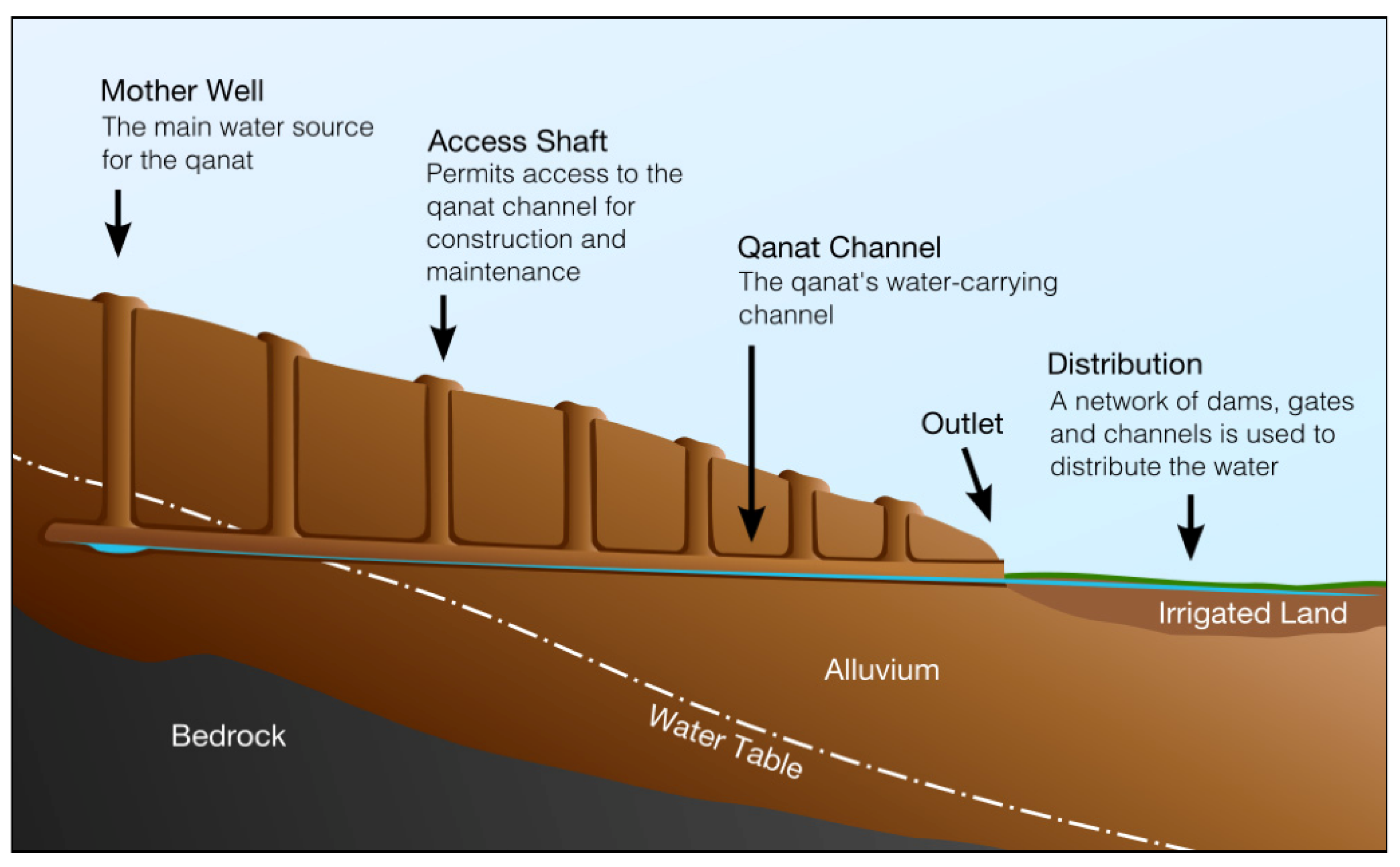
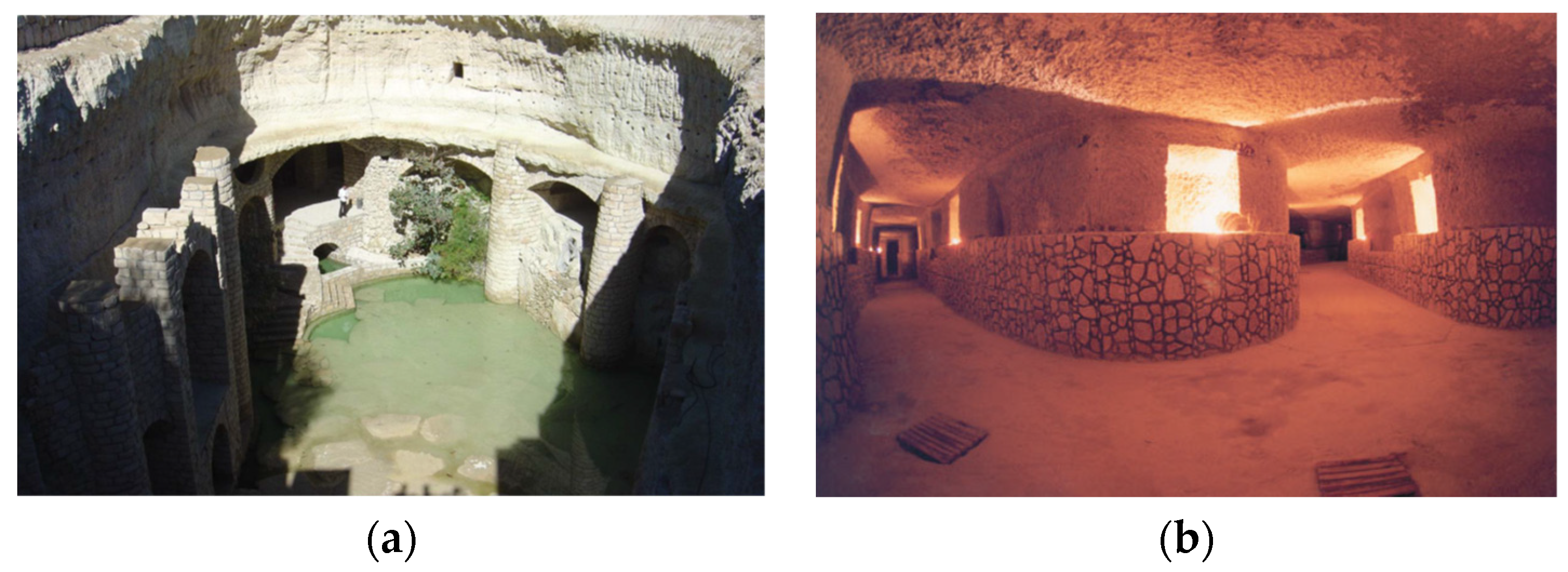
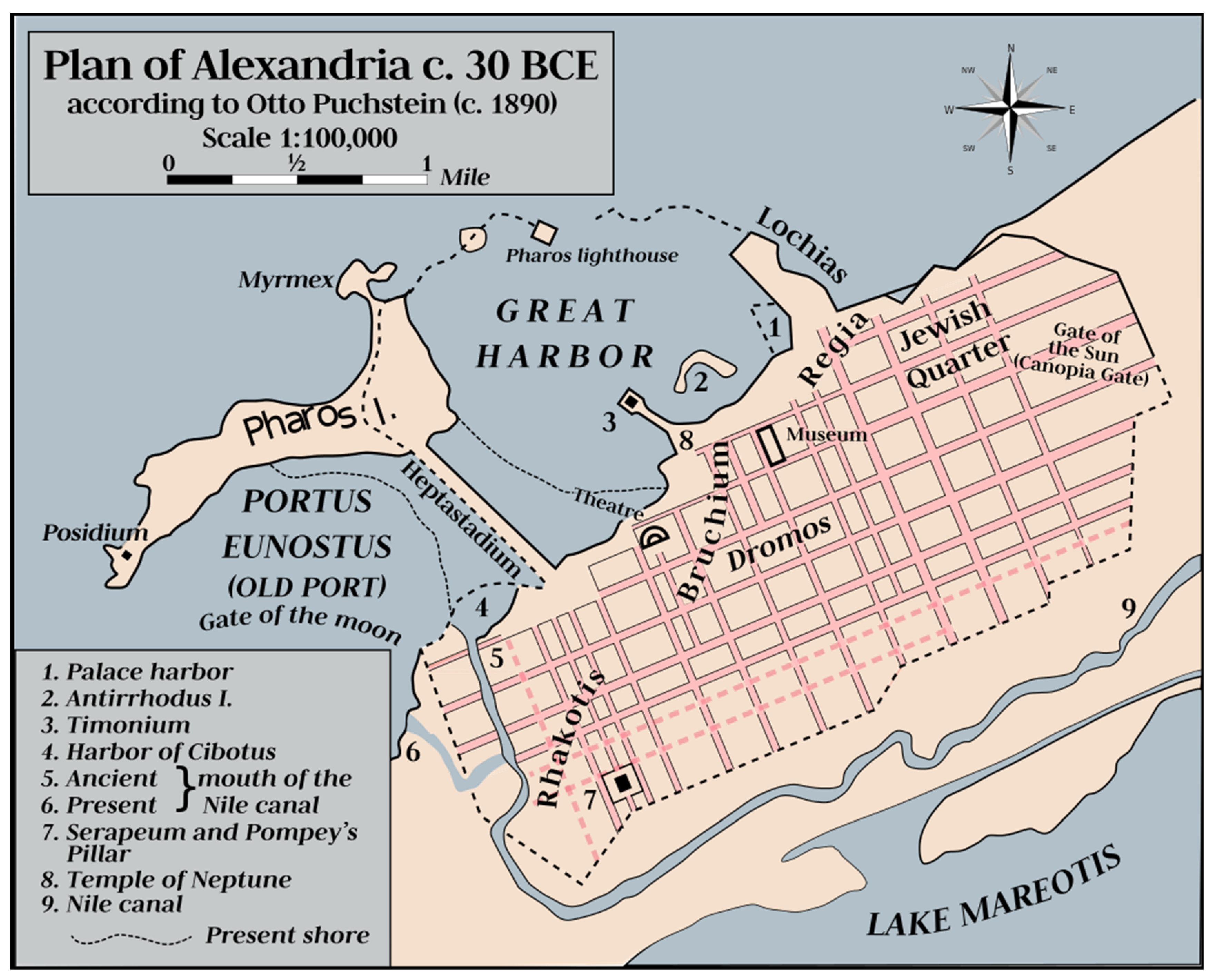
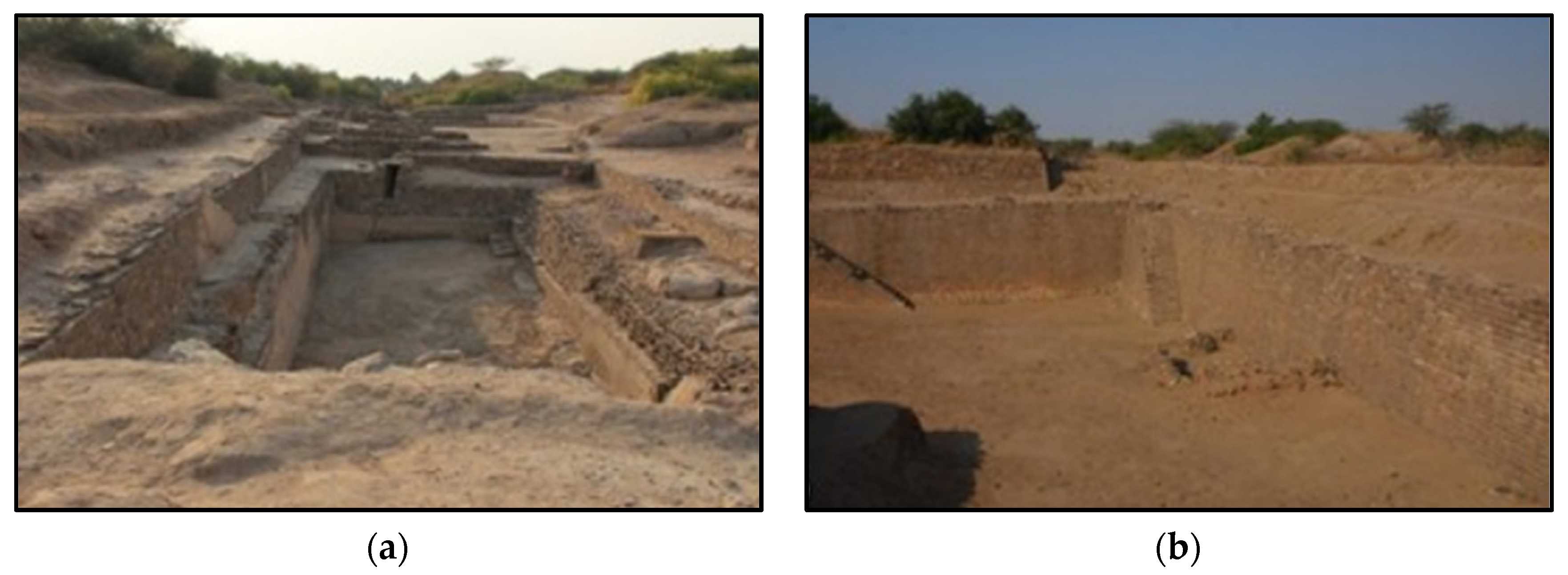
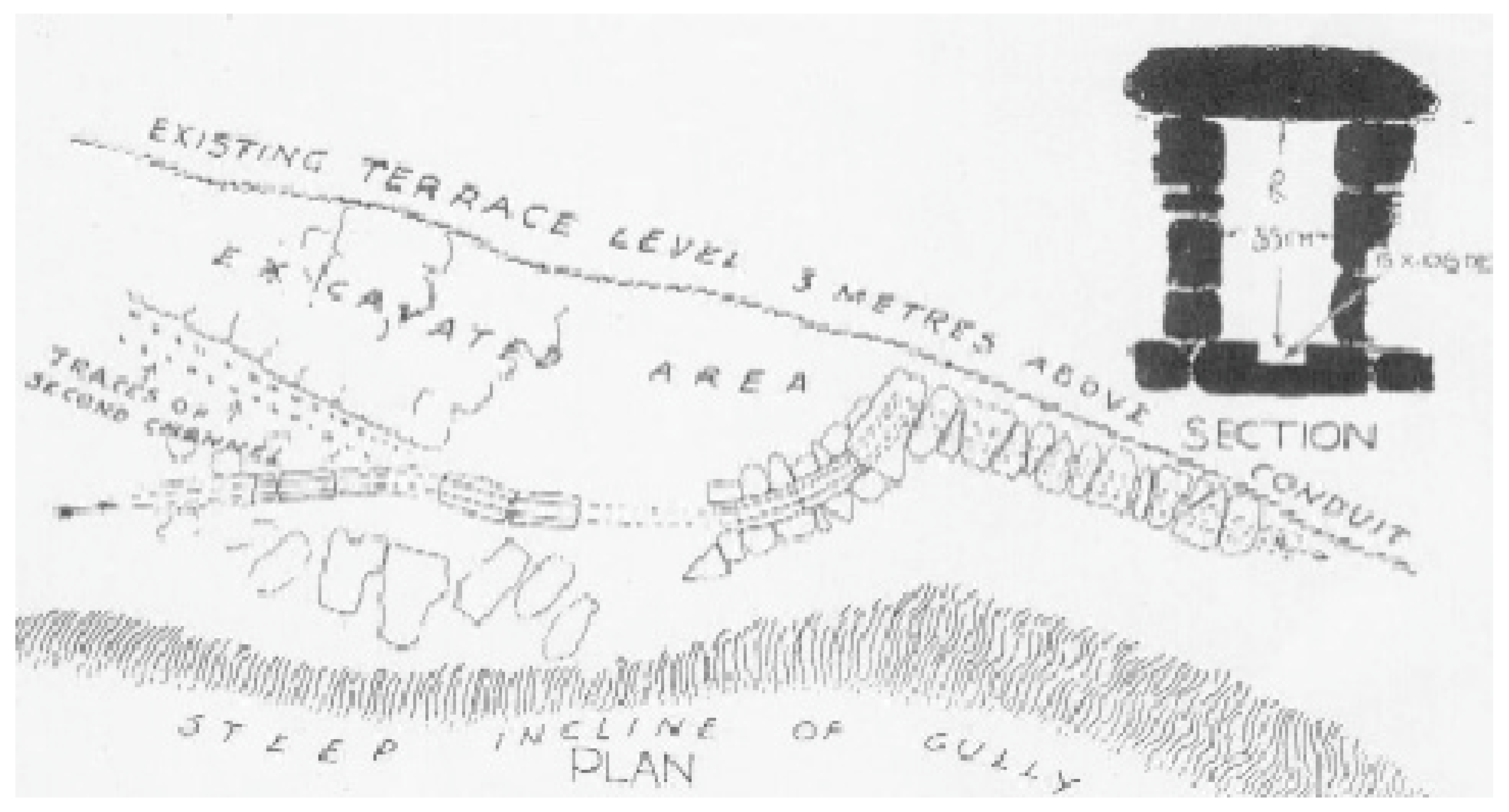
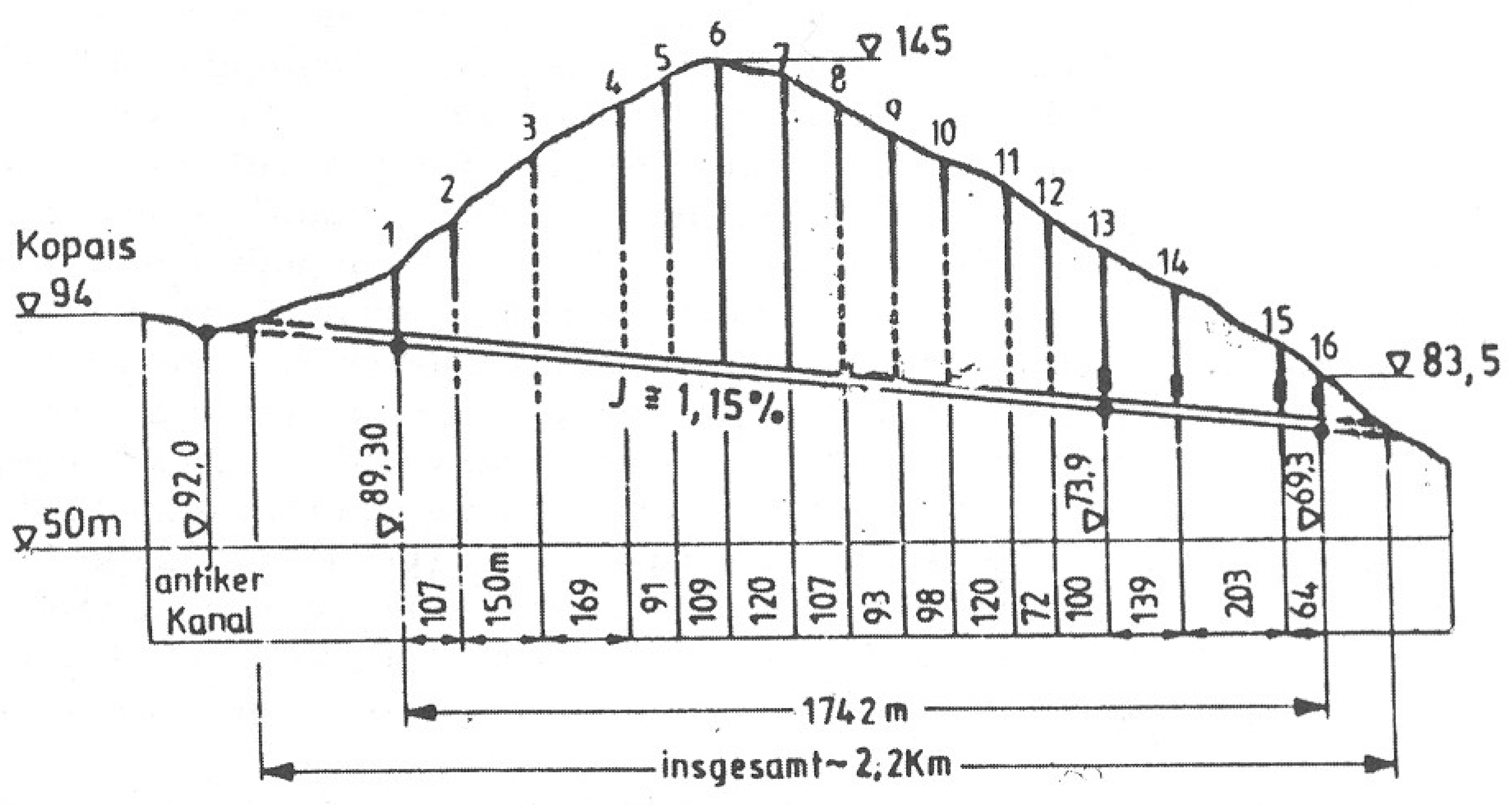
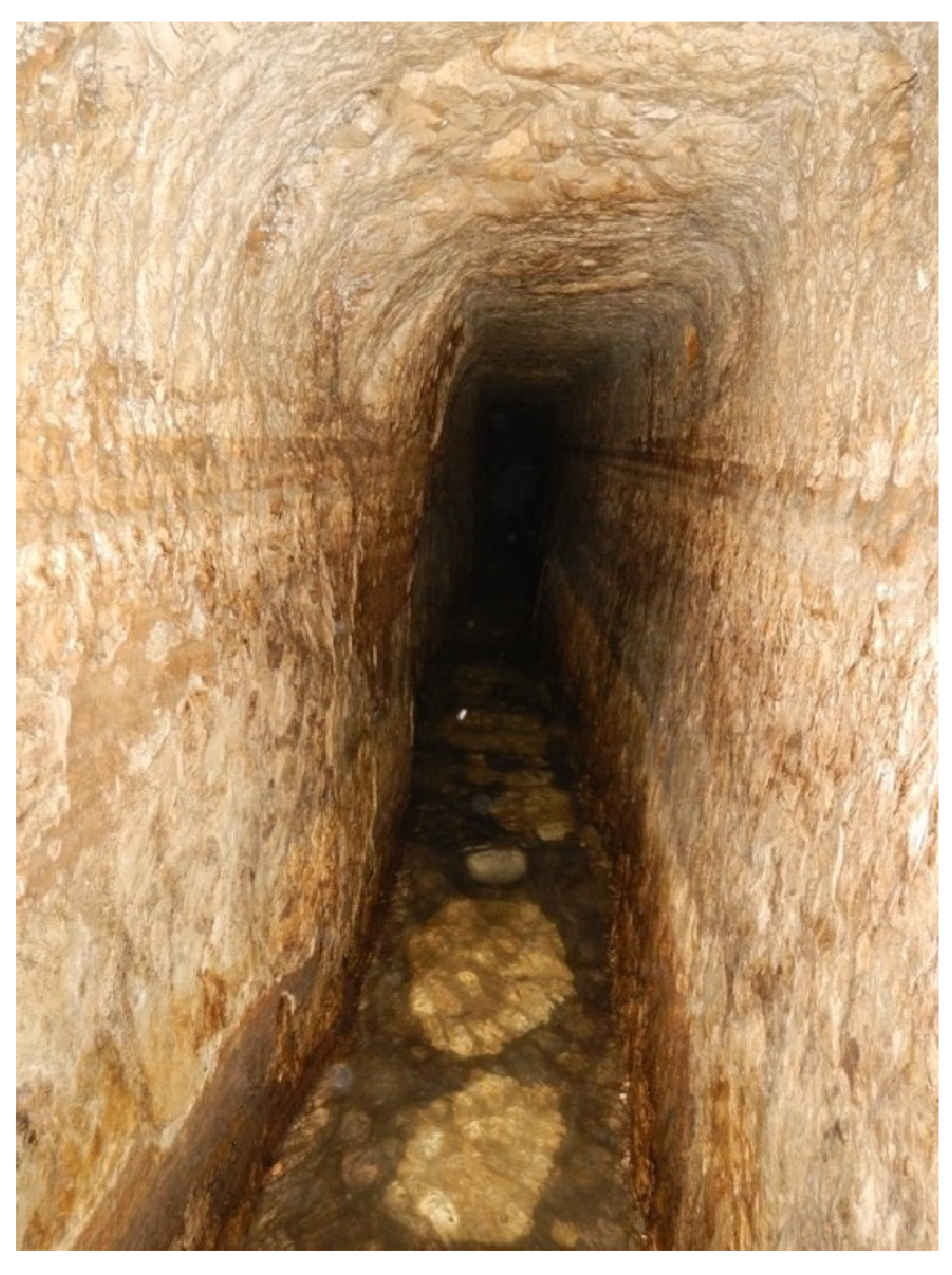
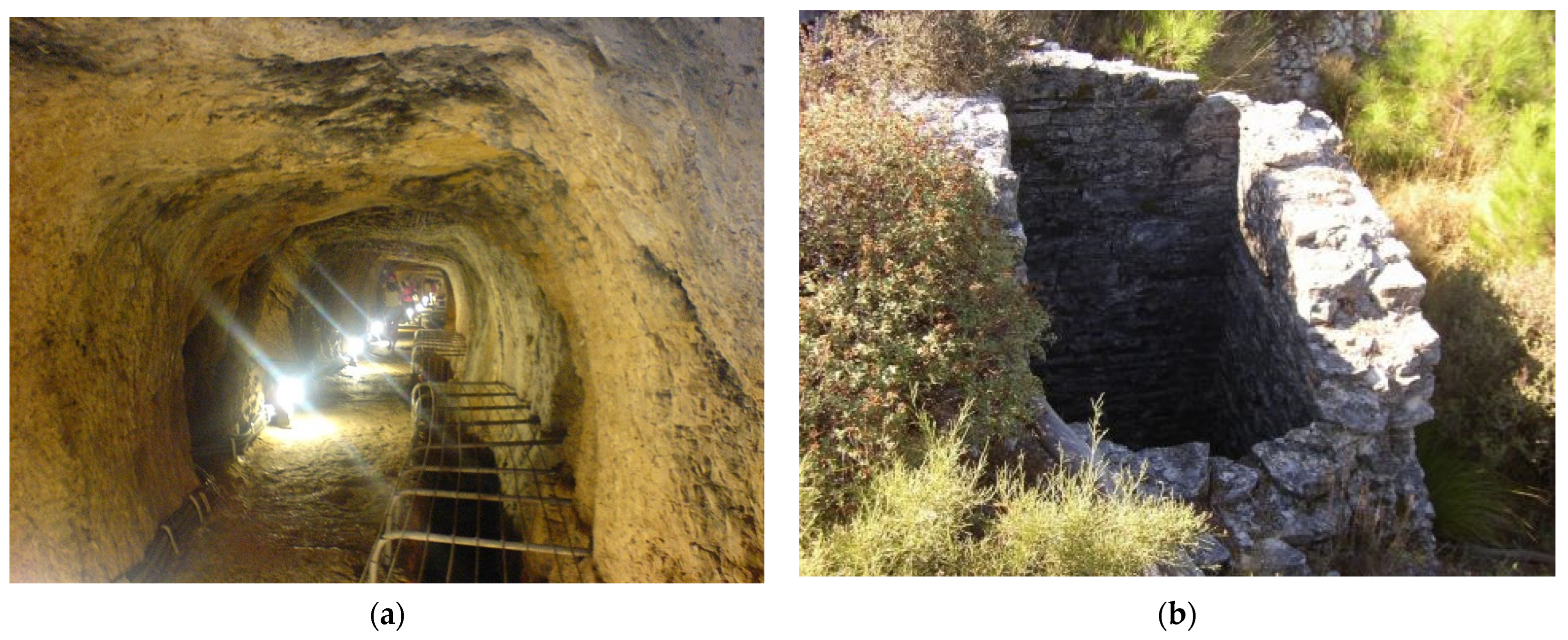

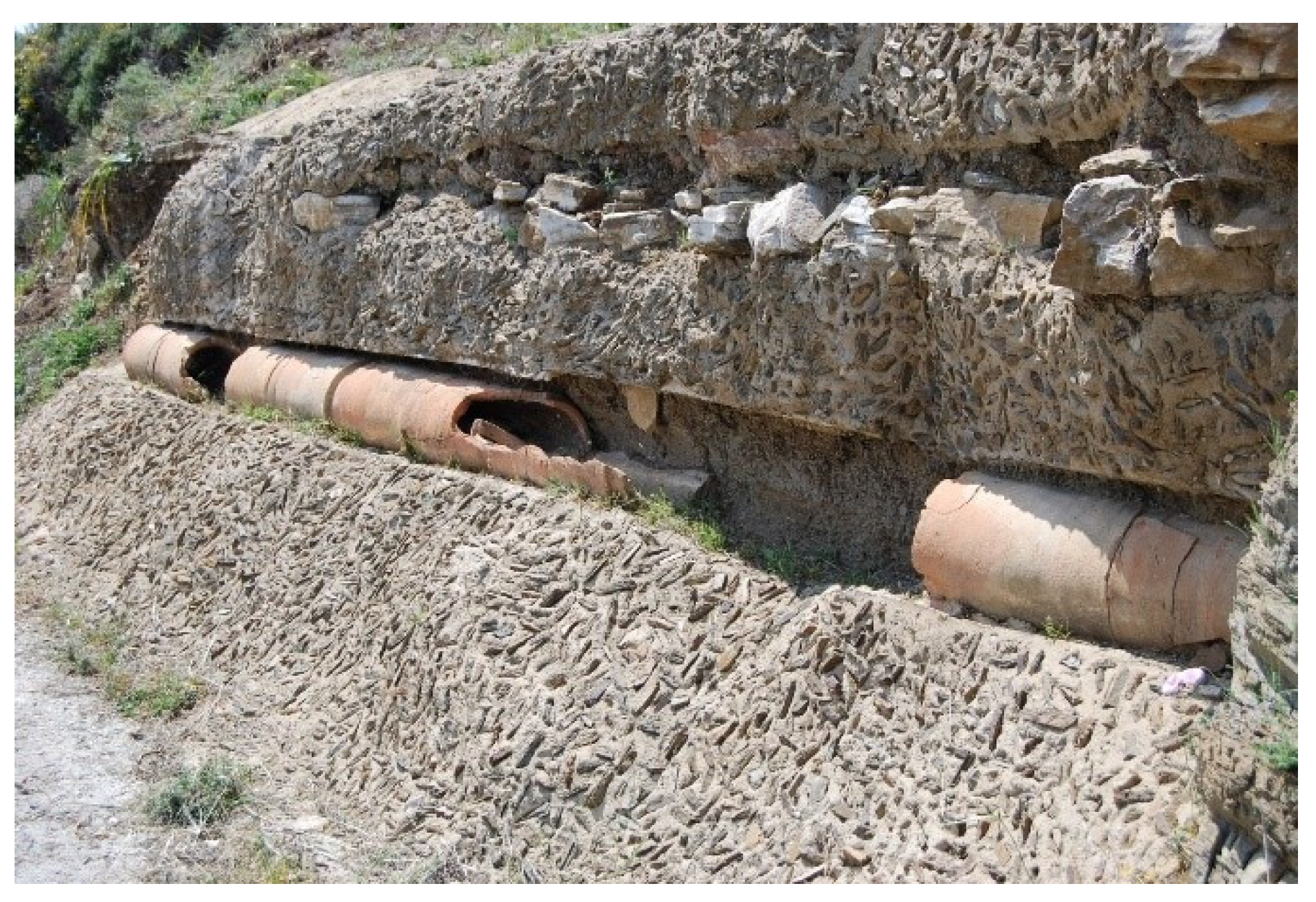
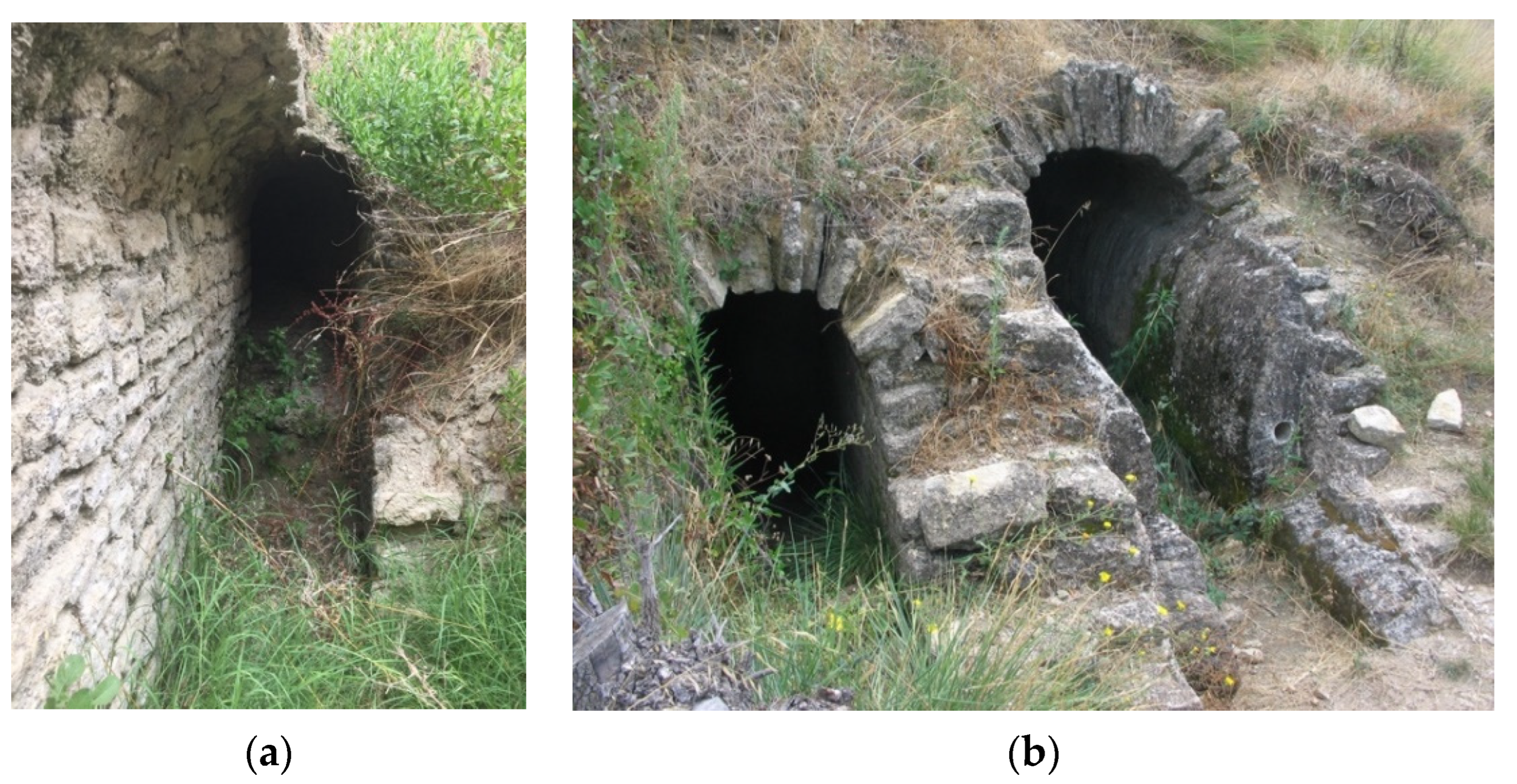
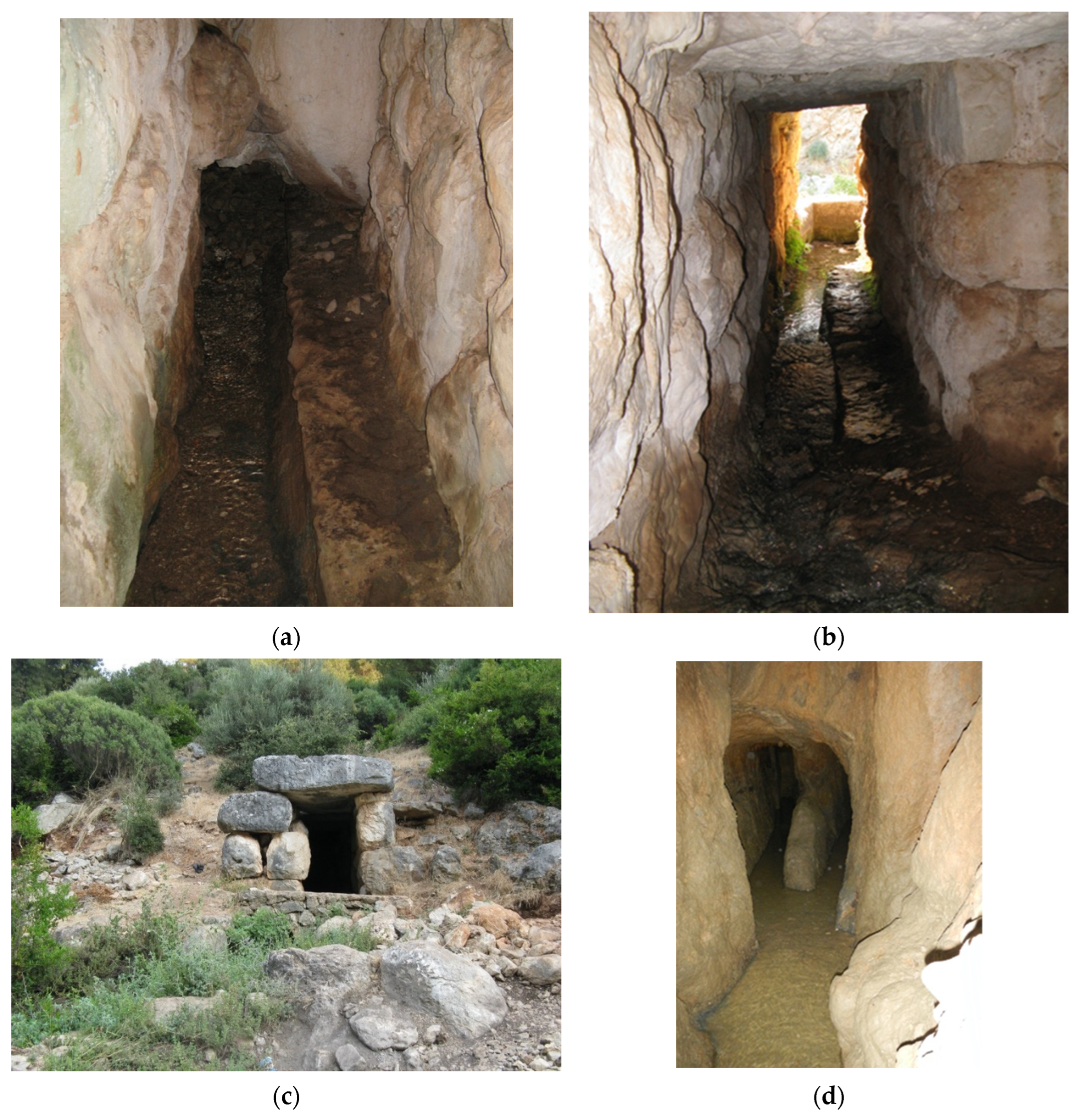
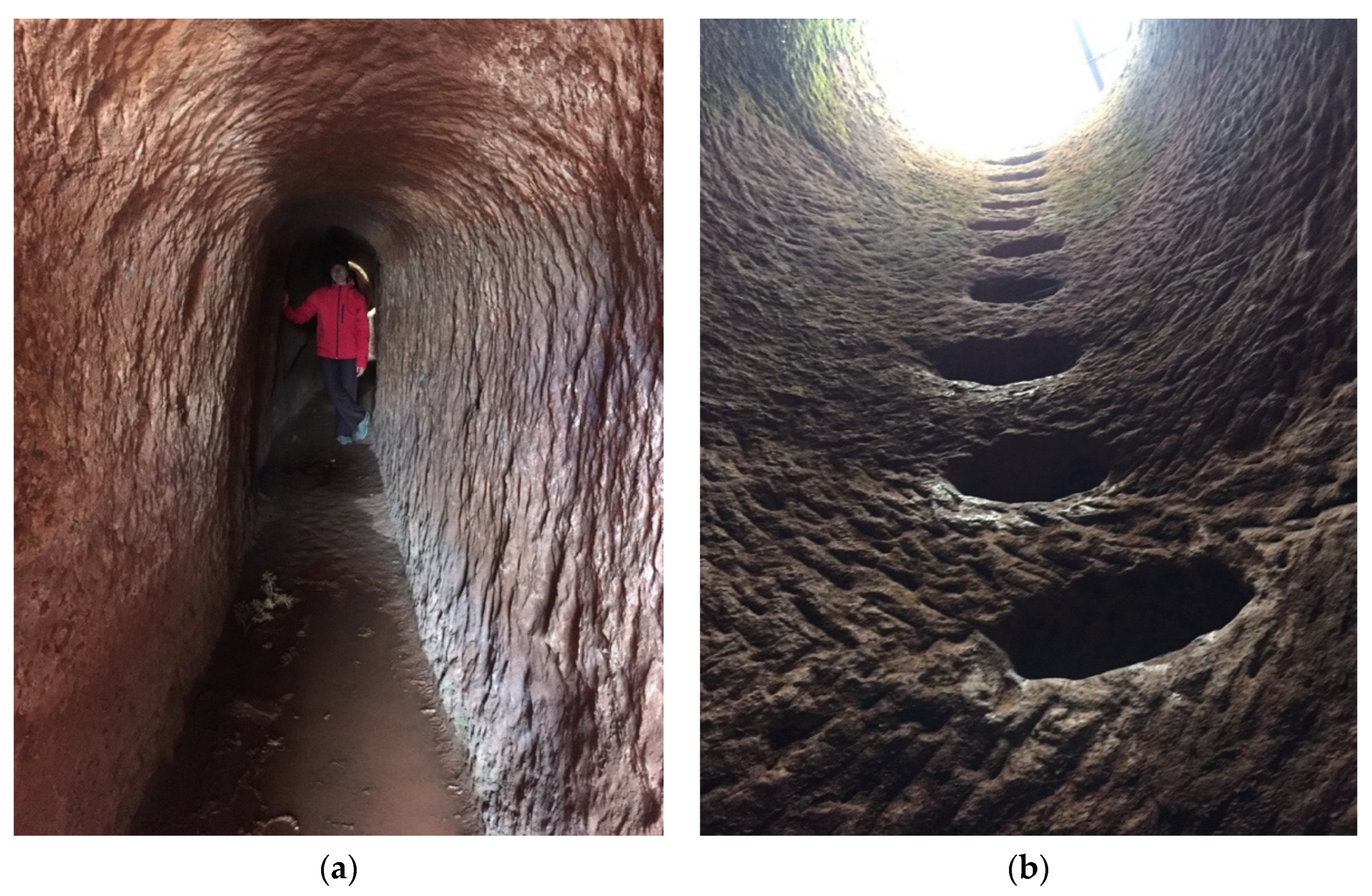

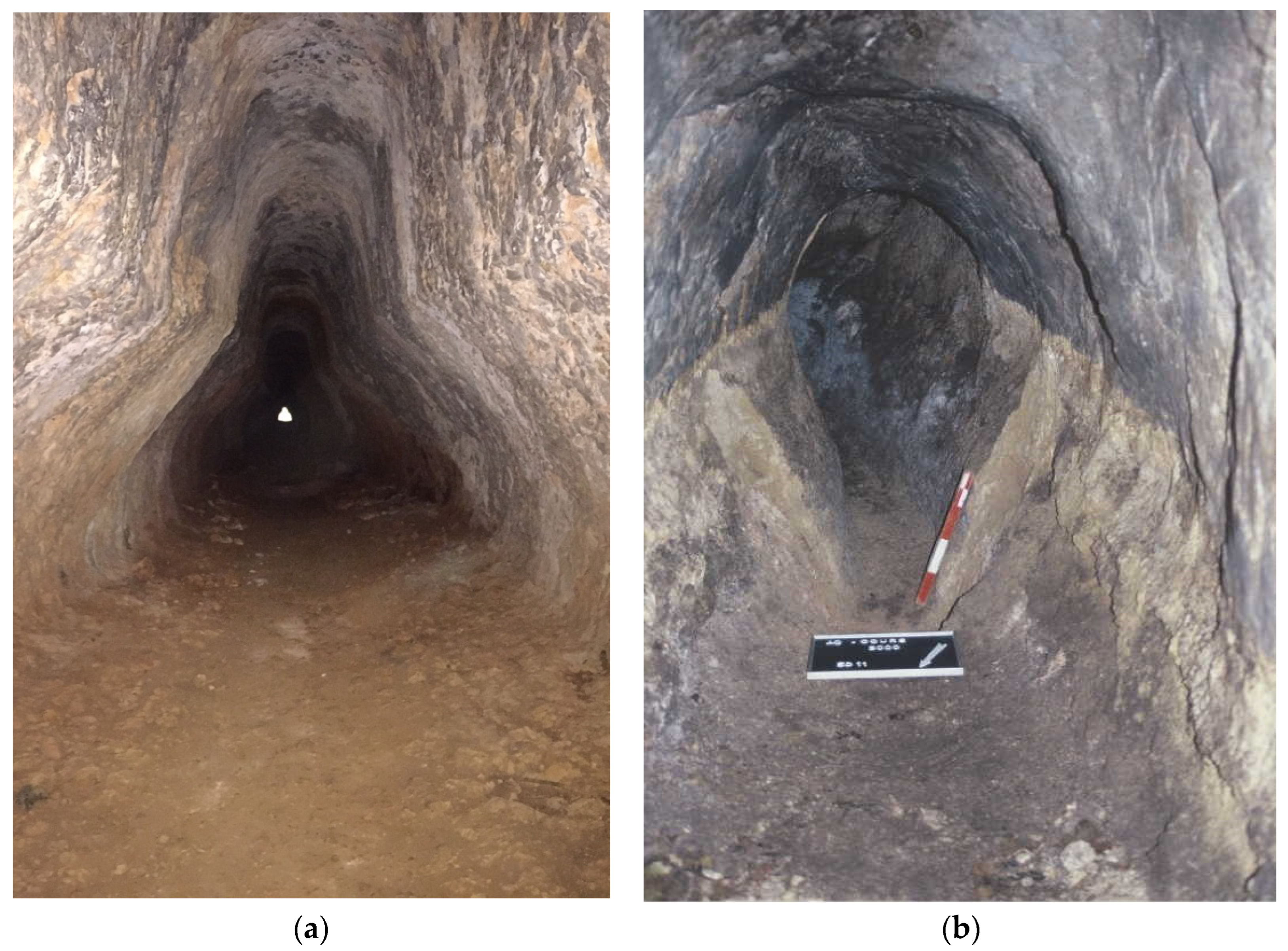
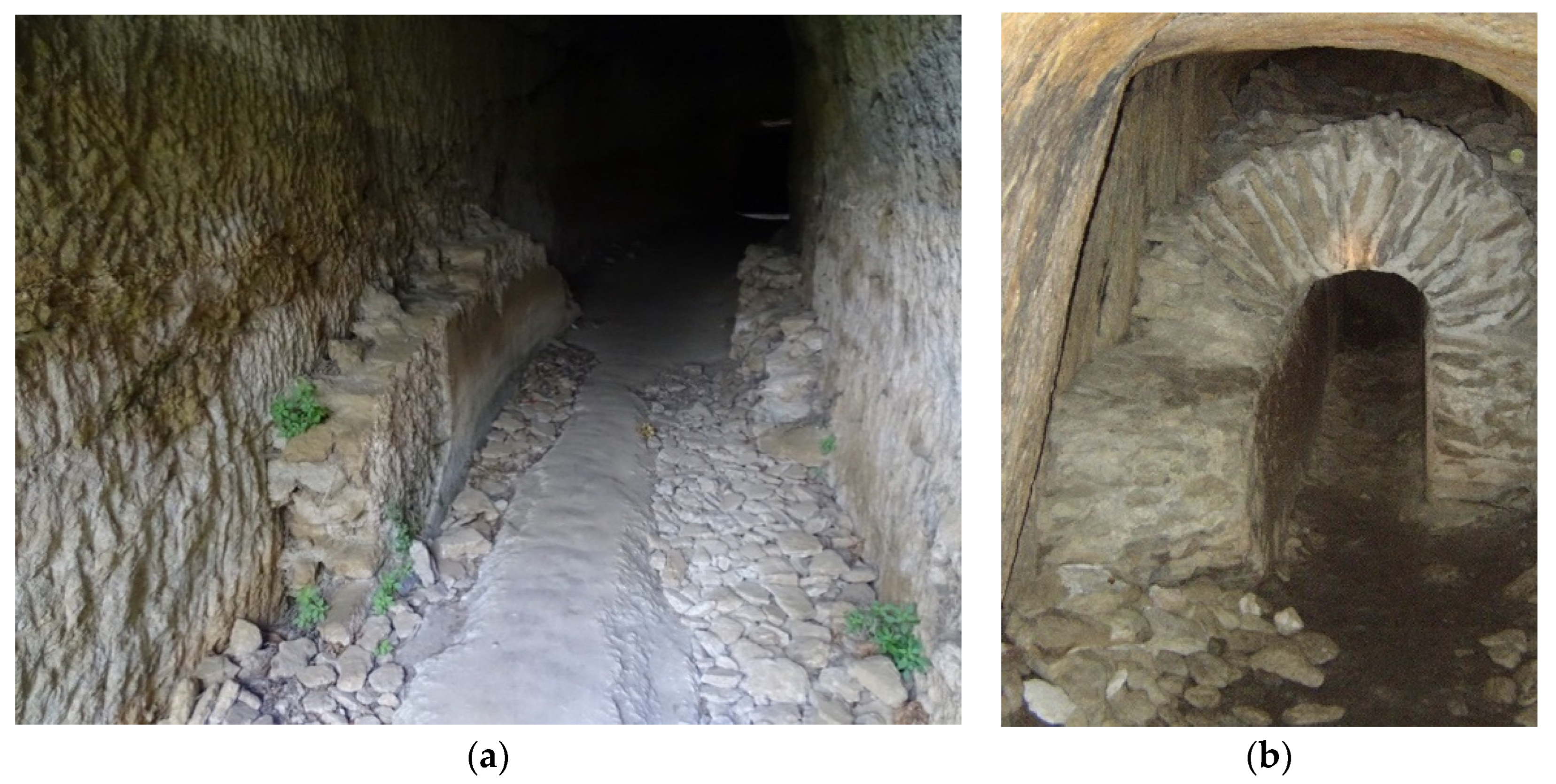

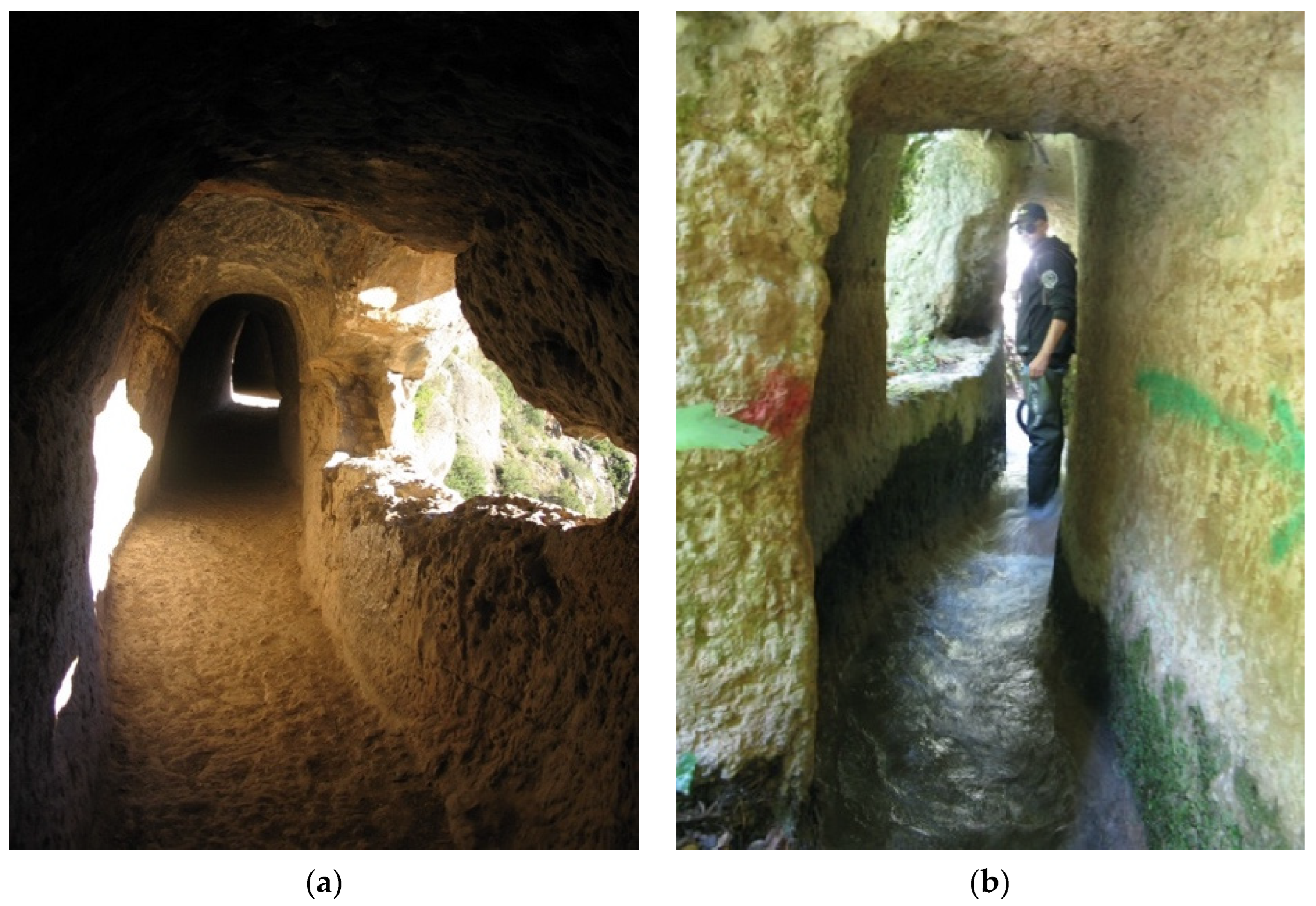
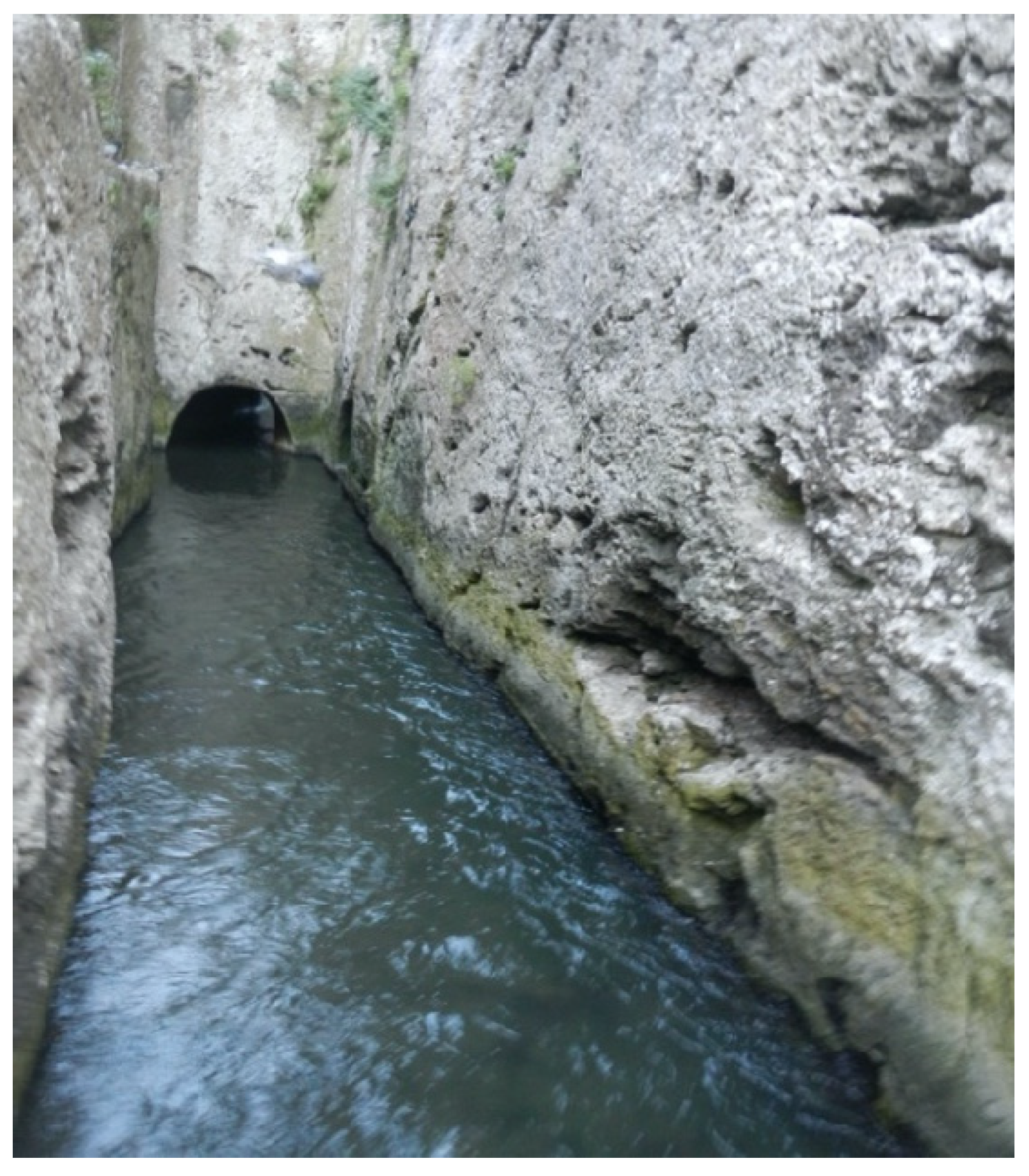
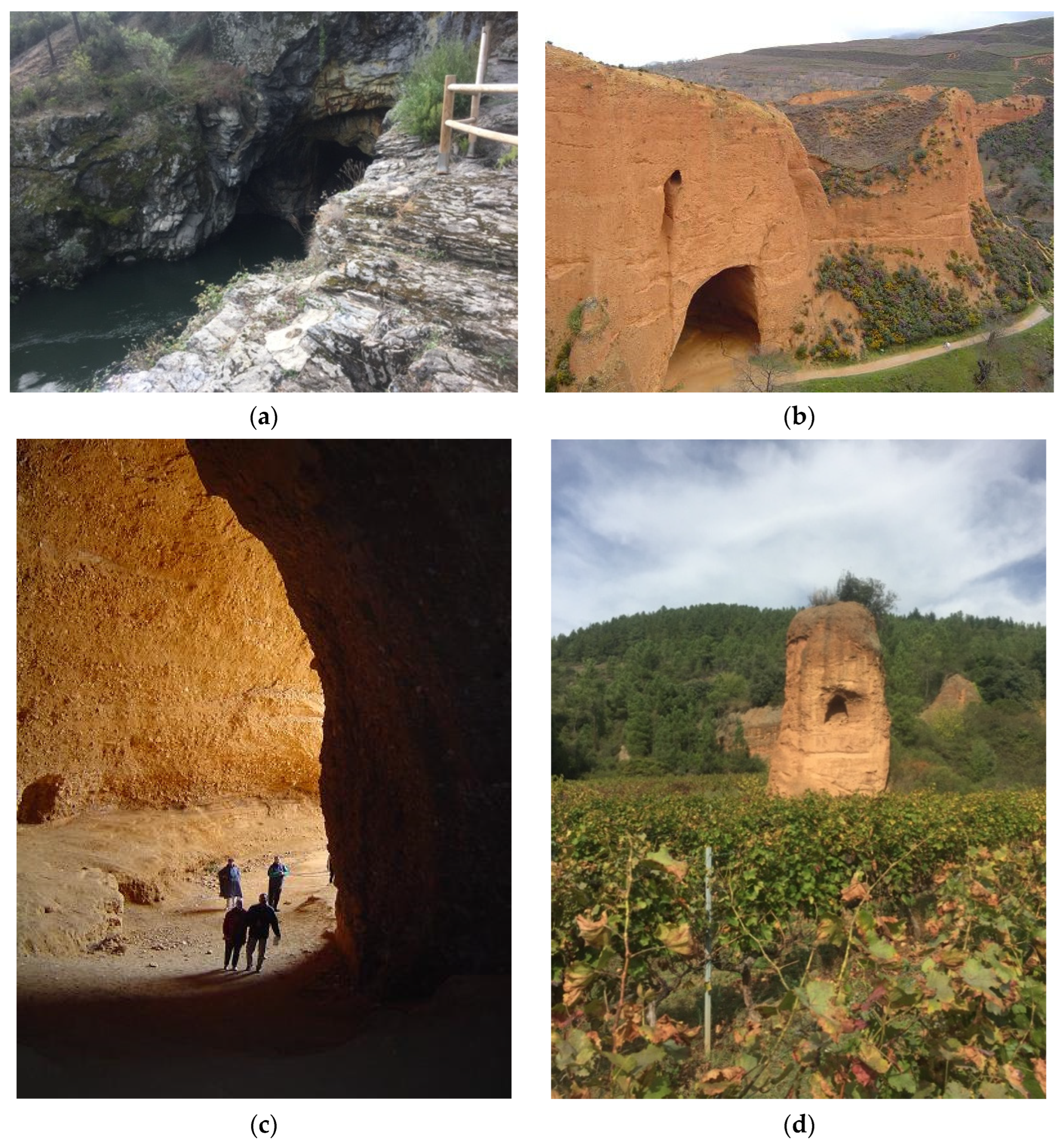
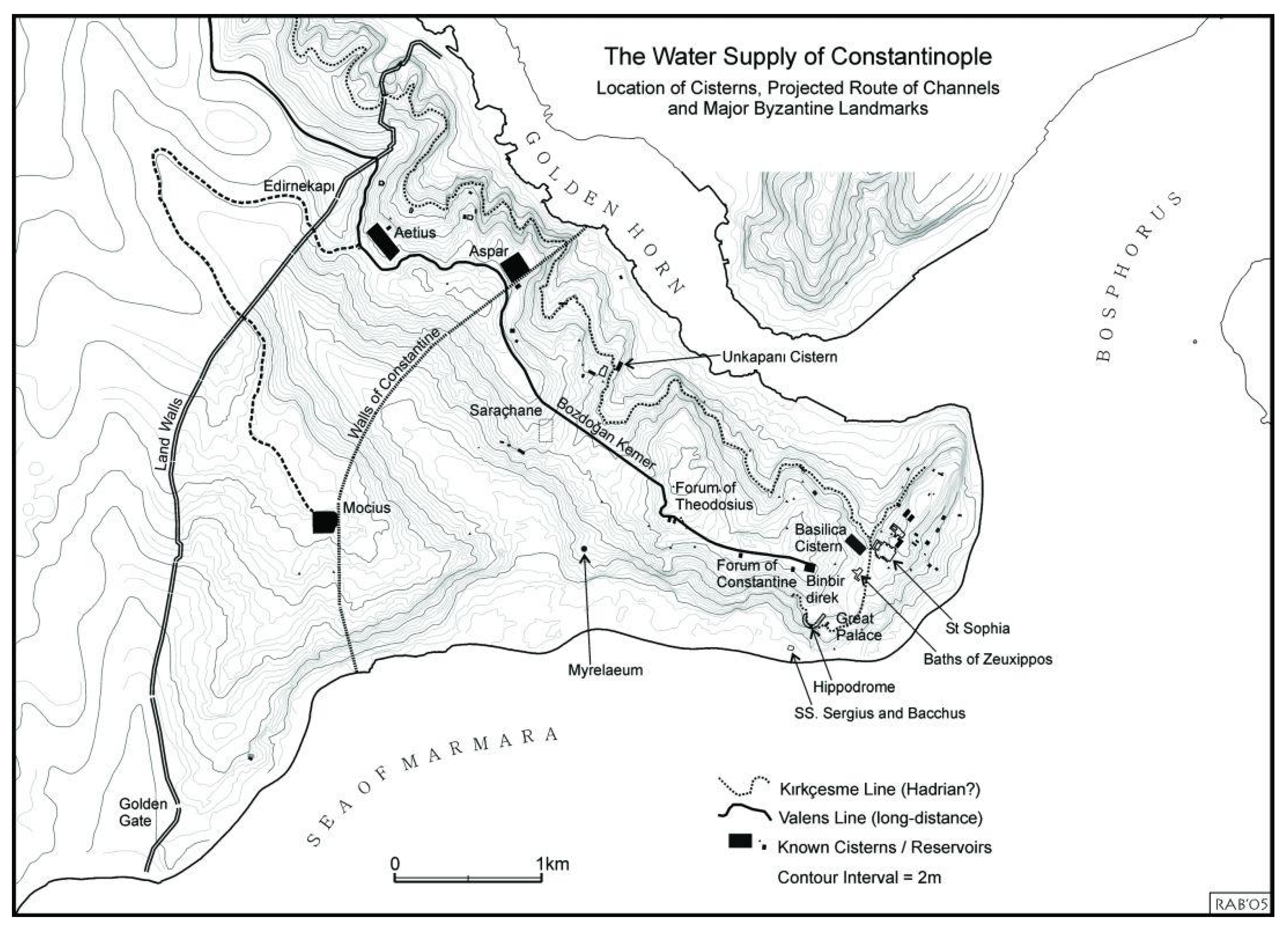
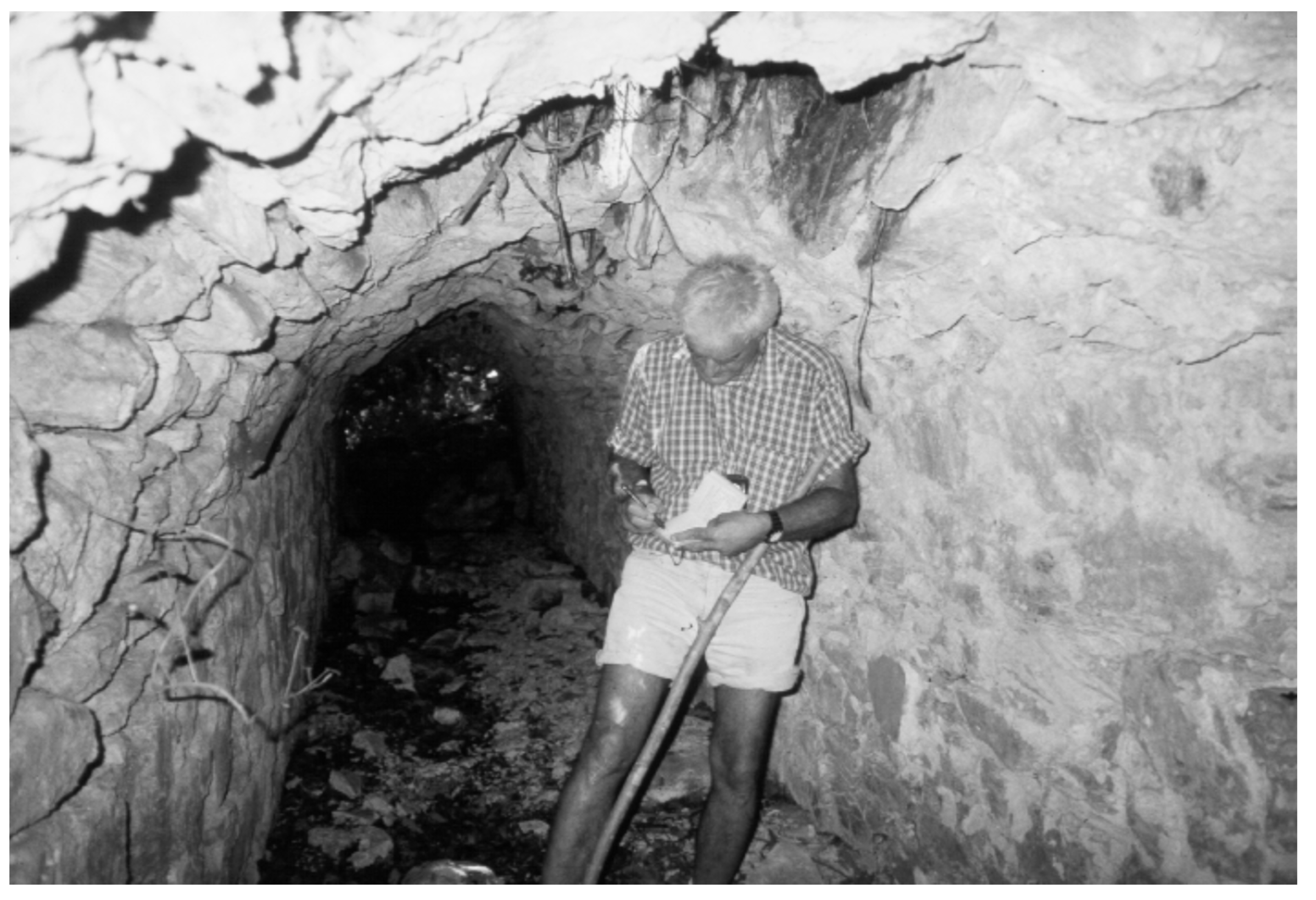
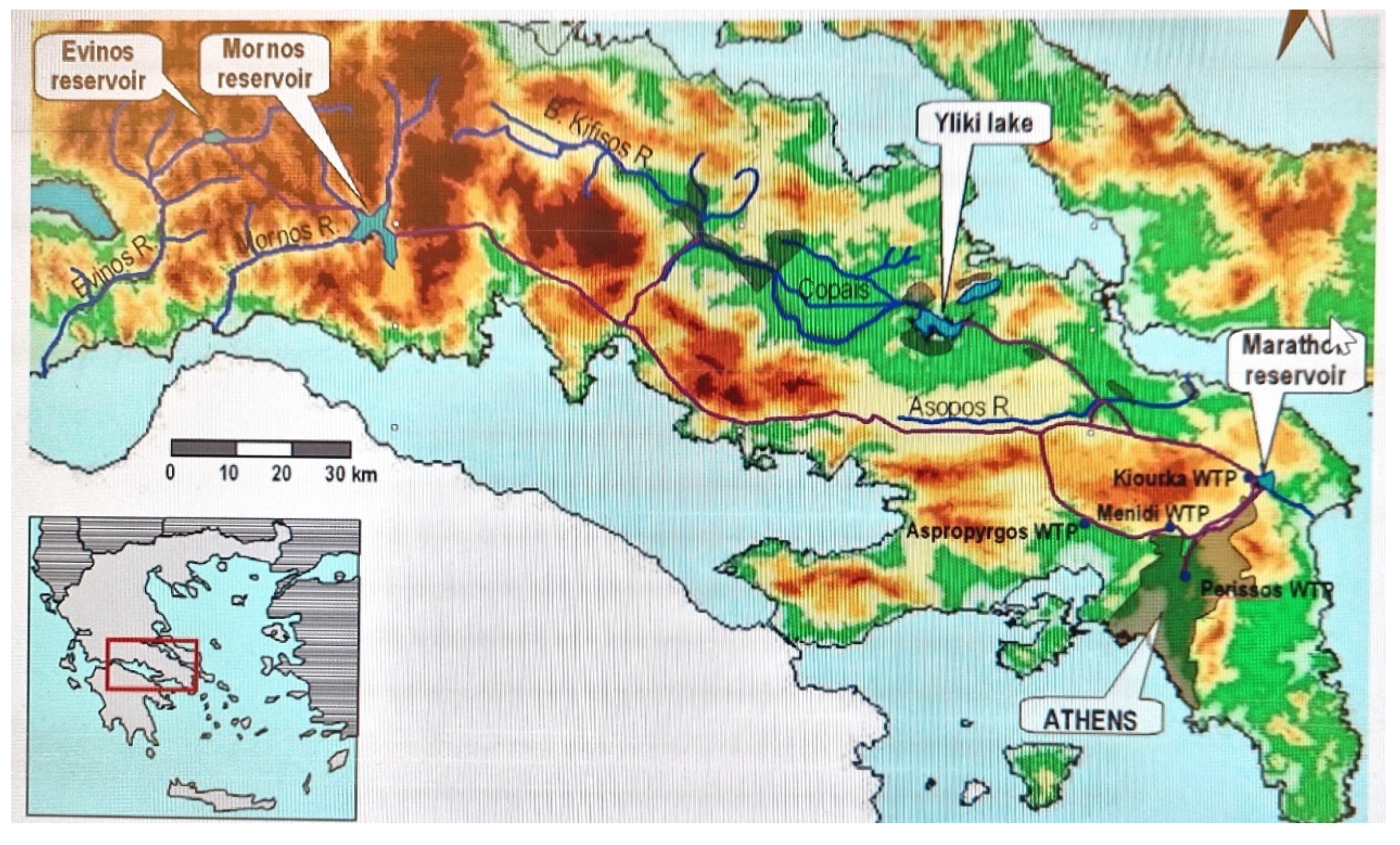
Disclaimer/Publisher’s Note: The statements, opinions and data contained in all publications are solely those of the individual author(s) and contributor(s) and not of MDPI and/or the editor(s). MDPI and/or the editor(s) disclaim responsibility for any injury to people or property resulting from any ideas, methods, instructions or products referred to in the content. |
© 2023 by the authors. Licensee MDPI, Basel, Switzerland. This article is an open access article distributed under the terms and conditions of the Creative Commons Attribution (CC BY) license (https://creativecommons.org/licenses/by/4.0/).
Share and Cite
Angelakis, A.N.; Passchier, C.W.; Valipour, M.; Krasilnikoff, J.A.; Tzanakakis, V.A.; Ahmed, A.T.; Baba, A.; Kumar, R.; Bilgic, E.; Capodaglio, A.G.; et al. Evolution of Tunneling Hydro-Technology: From Ancient Times to Present and Future. Hydrology 2023, 10, 190. https://doi.org/10.3390/hydrology10090190
Angelakis AN, Passchier CW, Valipour M, Krasilnikoff JA, Tzanakakis VA, Ahmed AT, Baba A, Kumar R, Bilgic E, Capodaglio AG, et al. Evolution of Tunneling Hydro-Technology: From Ancient Times to Present and Future. Hydrology. 2023; 10(9):190. https://doi.org/10.3390/hydrology10090190
Chicago/Turabian StyleAngelakis, Andreas N., Cees W. Passchier, Mohammad Valipour, Jens A. Krasilnikoff, Vasileios A. Tzanakakis, Abdelkader T. Ahmed, Alper Baba, Rohitashw Kumar, Esra Bilgic, Andrea G. Capodaglio, and et al. 2023. "Evolution of Tunneling Hydro-Technology: From Ancient Times to Present and Future" Hydrology 10, no. 9: 190. https://doi.org/10.3390/hydrology10090190
APA StyleAngelakis, A. N., Passchier, C. W., Valipour, M., Krasilnikoff, J. A., Tzanakakis, V. A., Ahmed, A. T., Baba, A., Kumar, R., Bilgic, E., Capodaglio, A. G., & Dercas, N. (2023). Evolution of Tunneling Hydro-Technology: From Ancient Times to Present and Future. Hydrology, 10(9), 190. https://doi.org/10.3390/hydrology10090190













